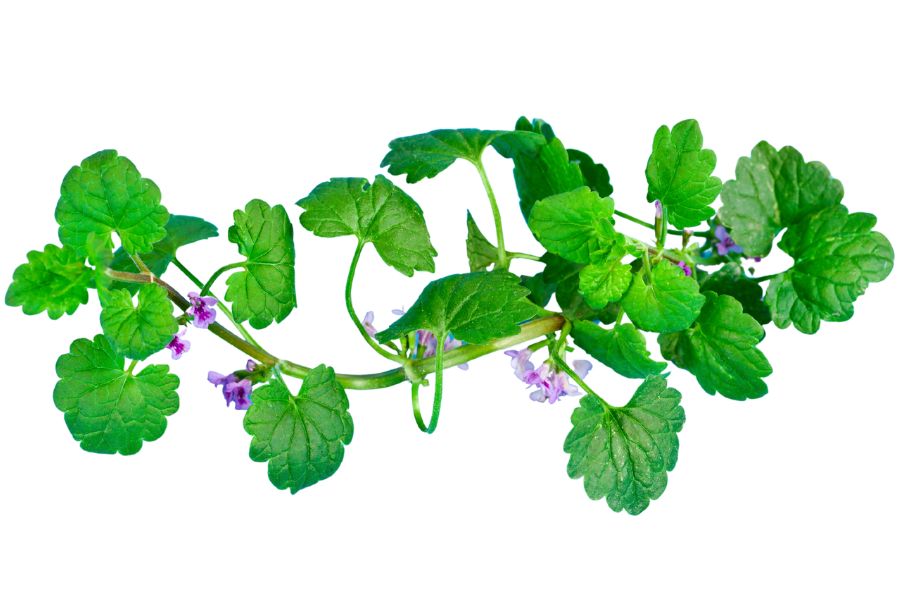If you’ve ever walked through a field or wooded trail in New Jersey, you’ve already passed edible plants without realizing it. Dandelion offers edible roots, stems, and flowers, and it’s one of the easiest to find in spring. By summer, you might notice elderberry shrubs flowering, later heavy with dark berries that need a little processing but pack real flavor.
Cattails grow in wetlands and provide multiple edible parts depending on the season, from tender shoots to pollen-rich spikes. Jerusalem artichokes hide their edible tubers underground well into fall. These aren’t just survival foods—they’ve been cooked into soups, syrups, and sautés for generations.
What’s surprising isn’t just how many edible plants there are in New Jersey, but how accessible they are if you’re looking. A little knowledge about timing and plant parts goes a long way. With some experience, you can fill your basket with a wide range of edible greens, shoots, fruits, and roots.
What We Cover In This Article:
- The Edible Plants Found in the State
- Toxic Plants That Look Like Edible Plants
- How to Get the Best Results Foraging
- Where to Find Forageables in the State
- Peak Foraging Seasons
- The extensive local experience and understanding of our team
- Input from multiple local foragers and foraging groups
- The accessibility of the various locations
- Safety and potential hazards when collecting
- Private and public locations
- A desire to include locations for both experienced foragers and those who are just starting out
Using these weights we think we’ve put together the best list out there for just about any forager to be successful!
A Quick Reminder
Before we get into the specifics about where and how to find these plants and mushrooms, we want to be clear that before ingesting any wild plant or mushroom, it should be identified with 100% certainty as edible by someone qualified and experienced in mushroom and plant identification, such as a professional mycologist or an expert forager. Misidentification can lead to serious illness or death.
All plants and mushrooms have the potential to cause severe adverse reactions in certain individuals, even death. If you are consuming wild foragables, it is crucial to cook them thoroughly and properly and only eat a small portion to test for personal tolerance. Some people may have allergies or sensitivities to specific mushrooms and plants, even if they are considered safe for others.
The information provided in this article is for general informational and educational purposes only. Foraging involves inherent risks.
The Edible Plants Found in the State
Wild plants found across the state can add fresh, seasonal ingredients to your meals:
Wild Leek / Ramp (Allium tricoccum)
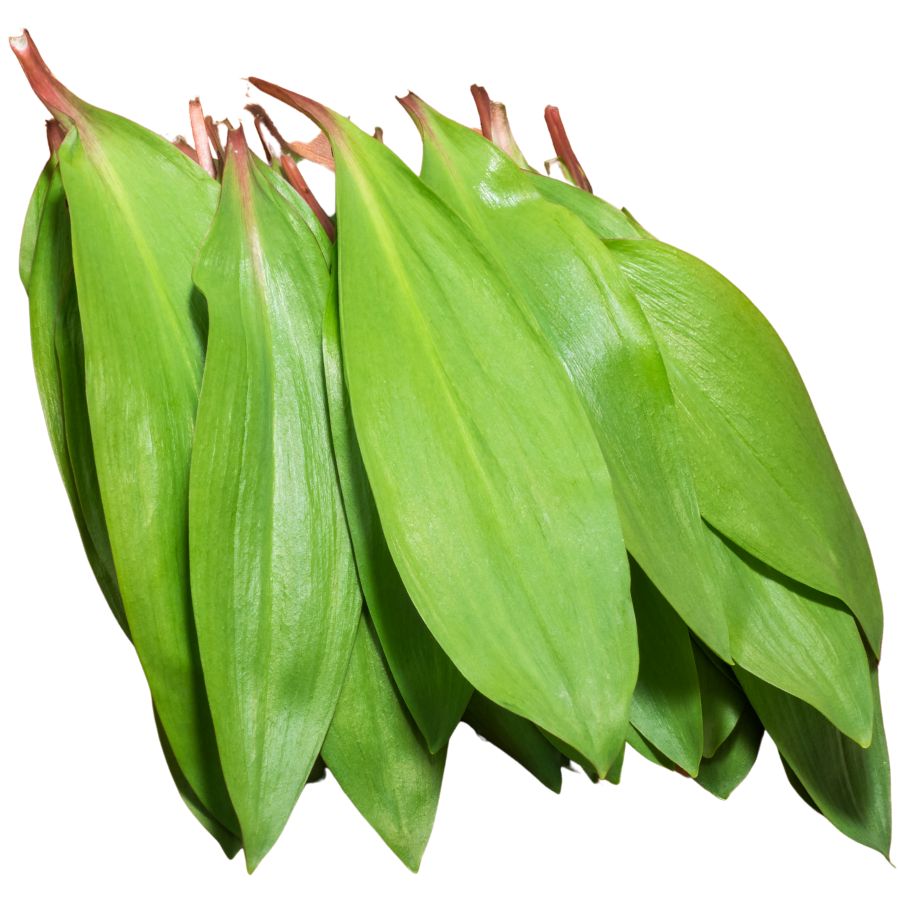
Known as wild leek, ramp, or ramson, this flavorful plant is famous for its broad green leaves and slender white stems. It grows low to the ground and gives off a strong onion-like scent when bruised, which can help you tell it apart from toxic lookalikes like lily of the valley.
If you give it a taste, you will notice a bold mix of onion and garlic flavors, with a tender texture that softens even more when cooked. People often sauté the leaves and stems, pickle the bulbs, or blend them into pestos and soups.
The entire plant can be used for cooking, but the leaves and bulbs are the most prized parts. It is important not to confuse it with similar-looking plants that do not have the signature onion smell when crushed.
Wild leek populations have declined in some areas because of overharvesting, so it is a good idea to only take a few from any given patch. When harvested thoughtfully, these vibrant greens can add a punch of flavor to just about anything you make.
Wood Sorrel (Oxalis stricta)
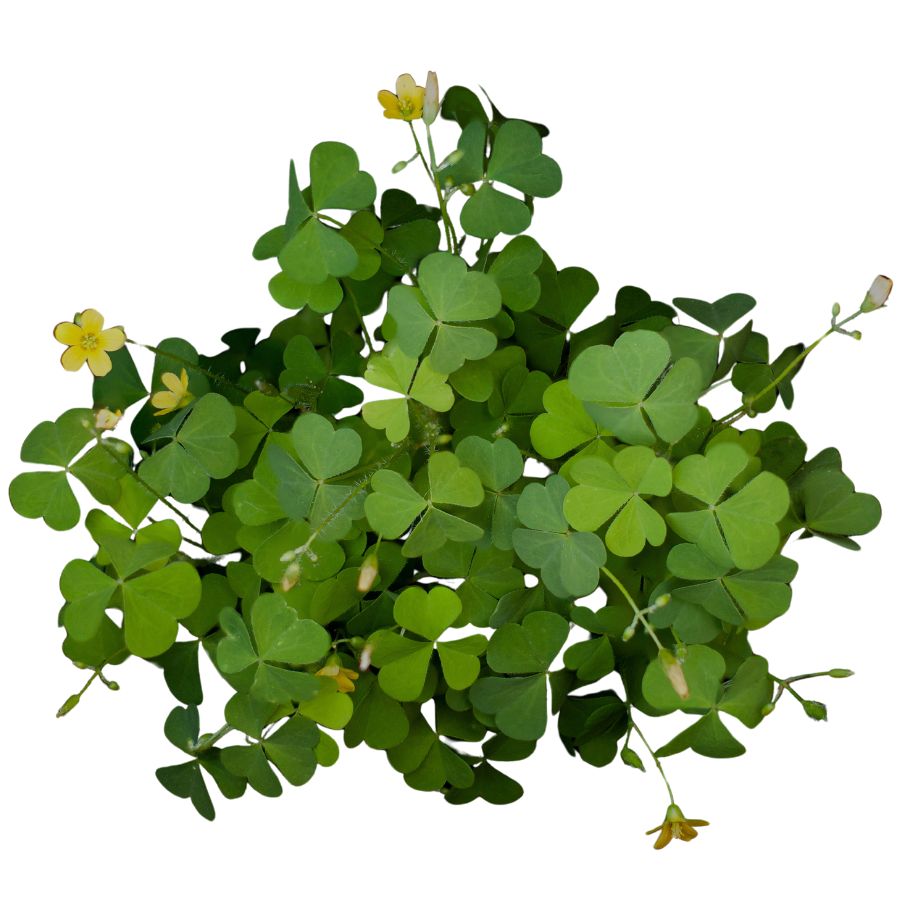
Wood sorrel has clover-like leaves and small yellow flowers. Each leaflet is heart-shaped, and the plant often folds up when touched or in low light.
The leaves, flowers, and seed pods are all safe to eat and have a tart, lemony flavor thanks to the oxalic acid they contain. You can toss them into salads, use them as a garnish, or nibble on them raw for a refreshing sour bite.
Be careful not to confuse it with clover, which has rounder leaves and lacks the same sharp tang when tasted. Large amounts of wood sorrel aren’t recommended if you have kidney issues, since oxalic acid can be hard on the kidneys over time.
The texture of the leaves is soft and delicate, making them a nice contrast in dishes with heavier greens. Even the seed pods have a bit of crunch and a pleasant tang if you catch them before they dry out.
Stinging Nettle (Urtica dioica)
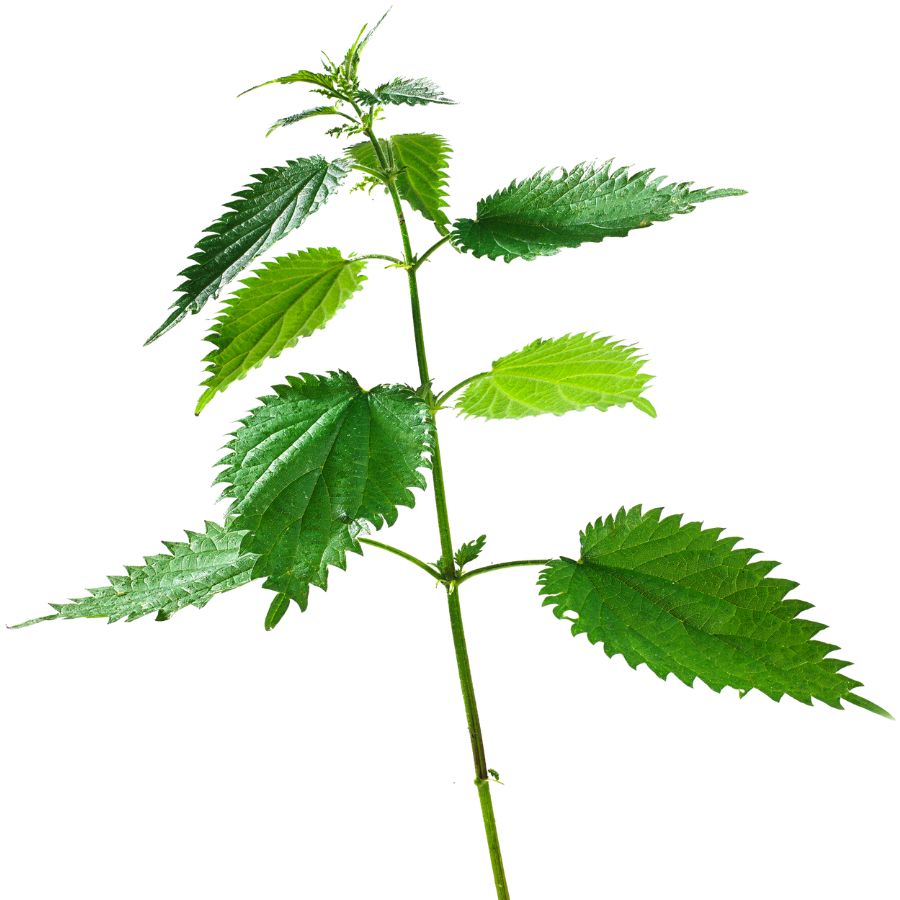
Stinging nettle is also known as burn weed or devil leaf, and it definitely earns those names. The tiny hairs on its leaves and stems can leave a painful, tingling rash if you brush against it raw, so always wear gloves when handling it.
Once it’s cooked or dried, those stingers lose their punch, and the leaves turn mild and slightly earthy in flavor. The texture softens too, making it a solid substitute for spinach in soups, pastas, or even as a simple sauté.
The young leaves and tender tops are what you want to collect. Avoid the tough lower stems and older leaves, which can be gritty or unpleasant to chew.
Some people confuse stinging nettle with purple deadnettle or henbit, but those don’t sting and have more rounded, fuzzy leaves. If the plant doesn’t make your skin react, it’s not stinging nettle.
Dandelion (Taraxacum officinale)
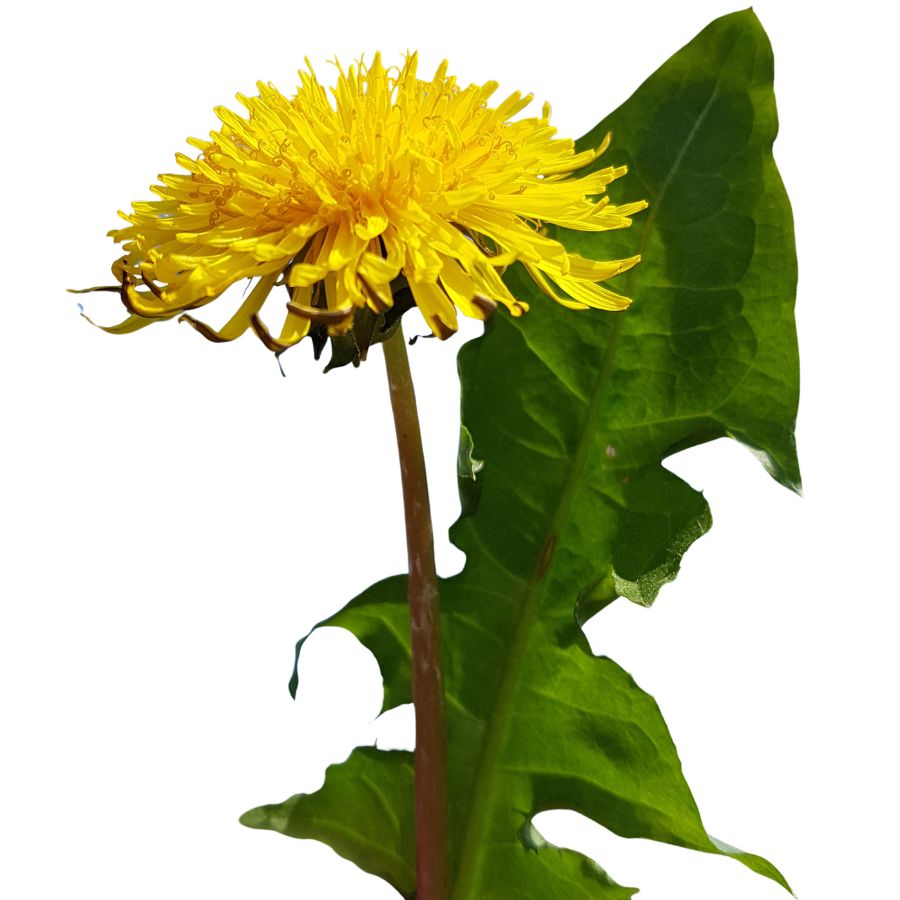
Bright yellow flowers and jagged, deeply toothed leaves make dandelions easy to spot in open fields, lawns, and roadsides. You might also hear them called lion’s tooth, blowball, or puffball once the flowers turn into round, white seed heads.
Every part of the dandelion is edible, but you will want to avoid harvesting from places treated with pesticides or roadside areas with heavy car traffic. Besides being a food source, dandelions have been used traditionally for simple herbal remedies and natural dye projects.
Young dandelion leaves have a slightly bitter, peppery flavor that works well in salads or sautés, and the flowers can be fried into fritters or brewed into tea. Some people even roast the roots to make a coffee substitute with a rich, earthy taste.
One thing to watch out for is cat’s ear, a common lookalike with hairy leaves and branching flower stems instead of a single, hollow one. To make sure you have a true dandelion, check for a smooth, hairless stem that oozes a milky sap when broken.
Lamb’s Quarters (Chenopodium album)
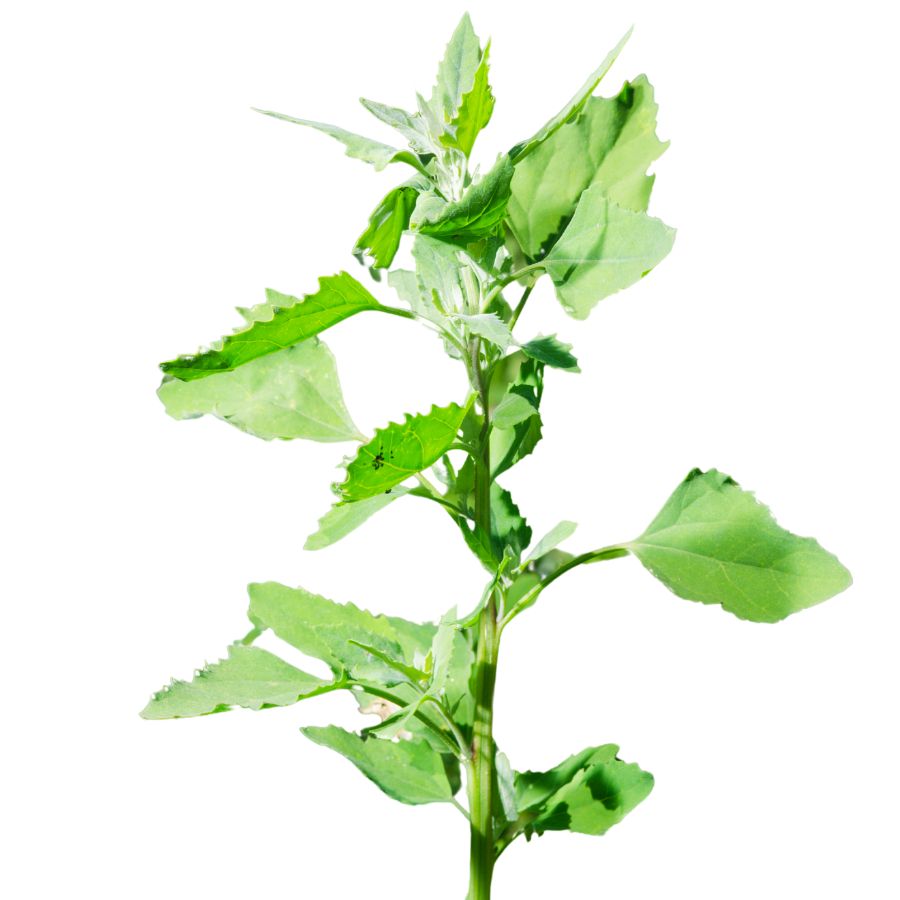
Lamb’s quarters, also called wild spinach and pigweed, has soft green leaves that often look dusted with a white, powdery coating. The leaves are shaped a little like goose feet, with slightly jagged edges and a smooth underside that feels almost velvety when you touch it.
A few plants can be confused with lamb’s quarters, like some types of nightshade, but true lamb’s quarters never have berries and its leaves are usually coated in that distinctive white bloom. Always check that the stems are grooved and not round and smooth like the poisonous lookalikes.
When you taste lamb’s quarters, you will notice it has a mild, slightly nutty flavor that gets richer when cooked. The young leaves, tender stems, and even the seeds are all edible, but you should avoid eating the older stems because they become tough and stringy.
People often sauté lamb’s quarters like spinach, blend it into smoothies, or dry the leaves for later use in soups and stews. It is also rich in oxalates, so you will want to cook it before eating large amounts to avoid any problems.
Milkweed (Asclepias syriaca)
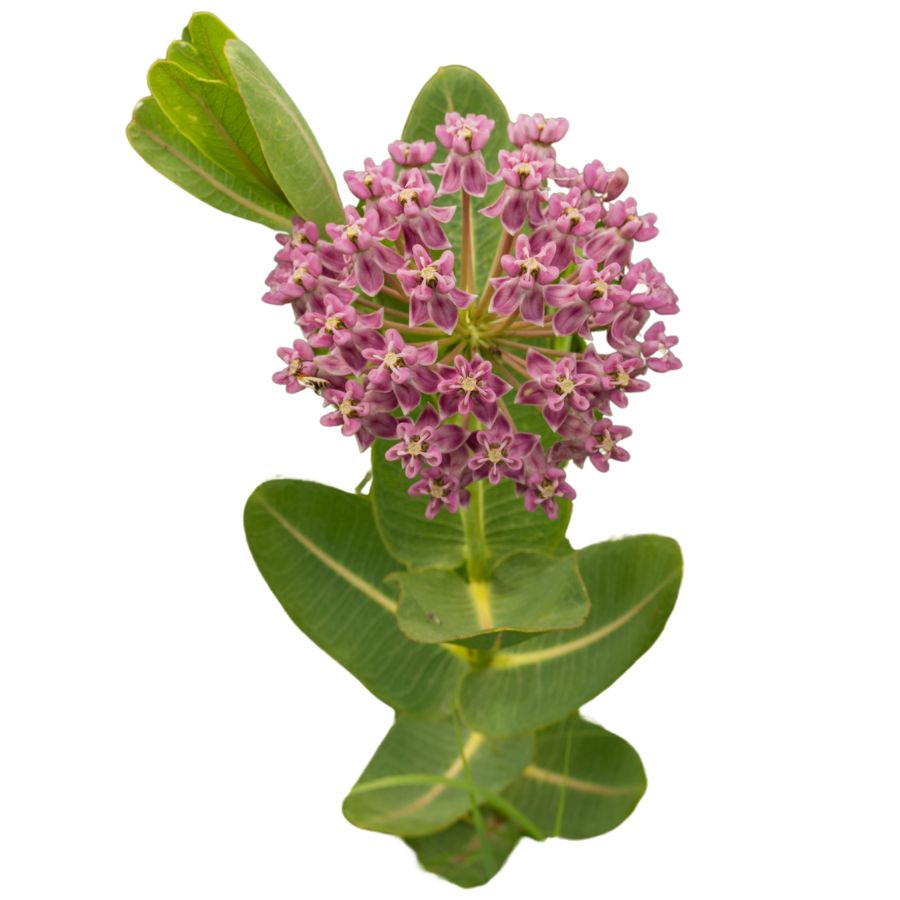
Known for its thick stems, broad leaves, and clusters of pinkish-purple flowers, common milkweed is sometimes called silkweed or butterfly flower. When you snap a stem or leaf, it releases a milky sap that helps you tell it apart from other plants that can be harmful.
If you want to try it in the kitchen, focus on gathering the young shoots, the tightly closed flower buds, and the small, immature pods. These parts have a mild, slightly sweet flavor when cooked, and their soft texture makes them a good addition to soups, sautés, and fritters.
Getting it ready to eat takes a little care, since boiling the plant parts in several changes of water helps remove bitterness and unwanted compounds. Some people also like to steam the buds or fry the pods lightly to bring out their best taste.
Although monarch caterpillars rely on this plant for survival, it has a long history of being used by people as well. Watch out for lookalikes like dogbane, though, since they share the same milky sap but are dangerously toxic if eaten.
Plantain (Plantago major)
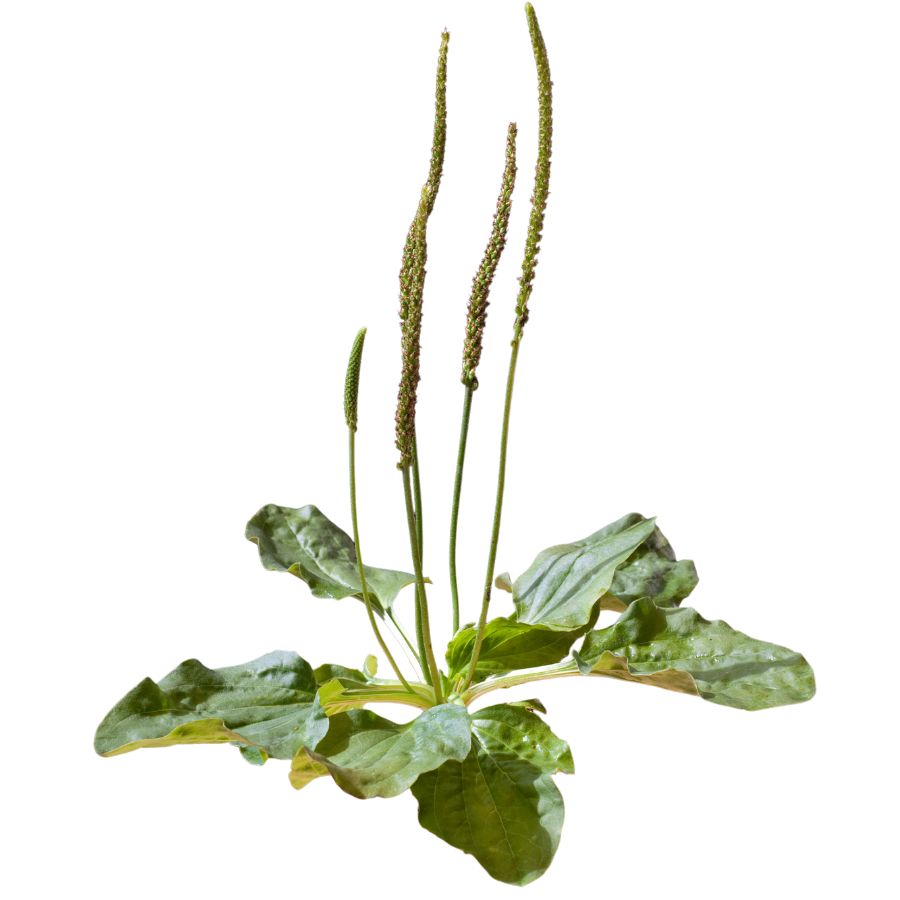
Plantain, also called common plantain or narrowleaf plantain depending on the type, is a low-growing plant with broad or lance-shaped leaves and tall, slender flower spikes. The leaves grow in a rosette close to the ground, and the thick veins running through them are one of the easiest ways to tell it apart from other plants.
You can mainly eat the young leaves and the seeds of the plants. Older leaves can become tough and stringy, so it is best to pick the smaller, tender ones when you want to eat them.
Plantain leaves have a slightly bitter, earthy taste and a chewy texture, especially when eaten raw. Many people like to add them to salads, soups, or stews, or lightly steam them to soften the flavor.
Always make sure you have a true plantain before eating because some similar-looking yard plants are not palatable and can upset your stomach. Look for the strong parallel veins and the tough, fibrous stems to help confirm your find.
Curly Dock (Rumex crispus)
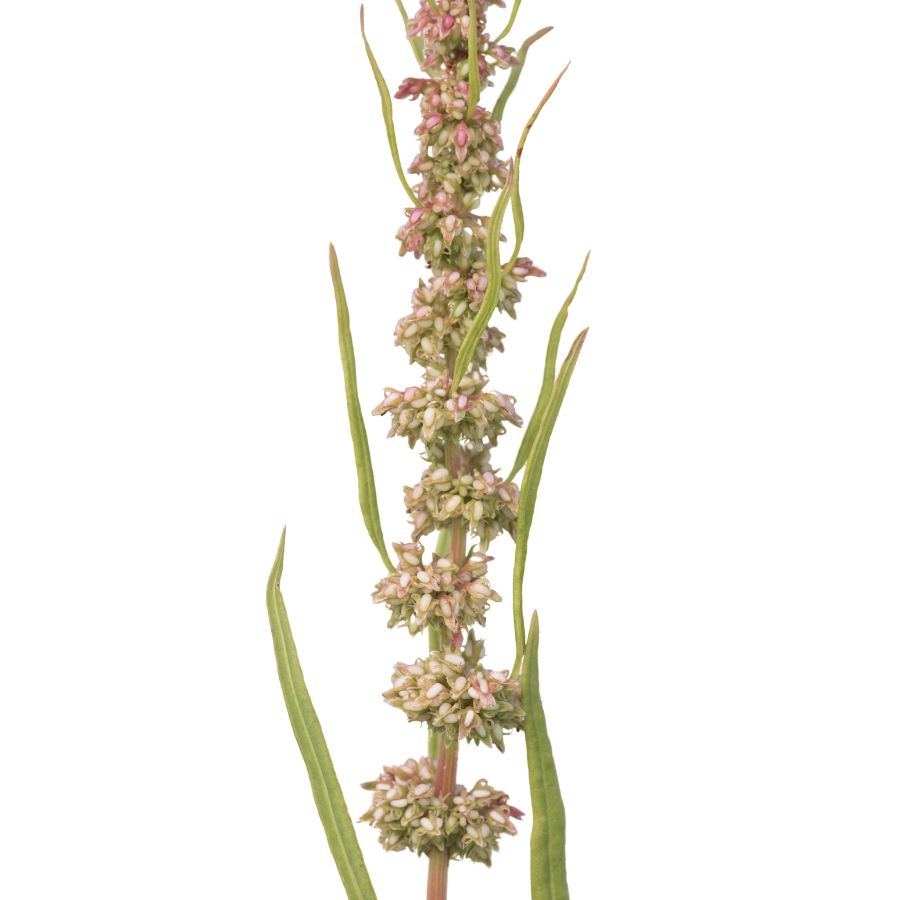
Curly dock, sometimes called yellow dock, is easy to spot once you know what to look for. It has long, wavy-edged leaves that form a rosette at the base, with tall stalks that eventually turn rusty brown as seeds mature.
The young leaves are edible and often cooked to mellow out their sharp, lemony taste, which can be too strong when eaten raw. You can also dry and powder the seeds to use as a flour supplement, although they are tiny and take some effort to prepare.
Curly dock has some lookalikes, like other types of dock and sorrel, but its heavily crinkled leaf edges and thick taproot help it stand out. Be careful not to confuse it with plants like wild rhubarb, which can have toxic parts if misidentified.
Besides being edible, curly dock has a history of being used in homemade remedies for skin irritation. The roots are not eaten raw because they are tough and contain compounds that can upset your stomach if you are not careful.
Black Raspberry (Rubus occidentalis)

Black raspberries grow on arching canes covered with small, hooked thorns. The berries start out red before ripening to a deep purplish-black color, and they have a hollow core when picked.
The fruit tastes sweet with a mild tartness, and the texture is juicy but slightly firmer than a red raspberry. People often use black raspberries for jams, pies, syrups, and even simple fruit leathers made at home.
Blackberry and wineberry are common lookalikes, which can confuse foragers at first glance. Black raspberry canes usually have a whitish coating and smaller thorns compared to the shinier, stouter canes of a blackberry.
You can eat the ripe fruit raw or cooked, but the leaves are sometimes brewed into teas after proper drying. It is best to avoid the green, unripe berries, as they are tough and lack the flavor that makes black raspberry such a favorite.
Blueberry (Vaccinium spp.)
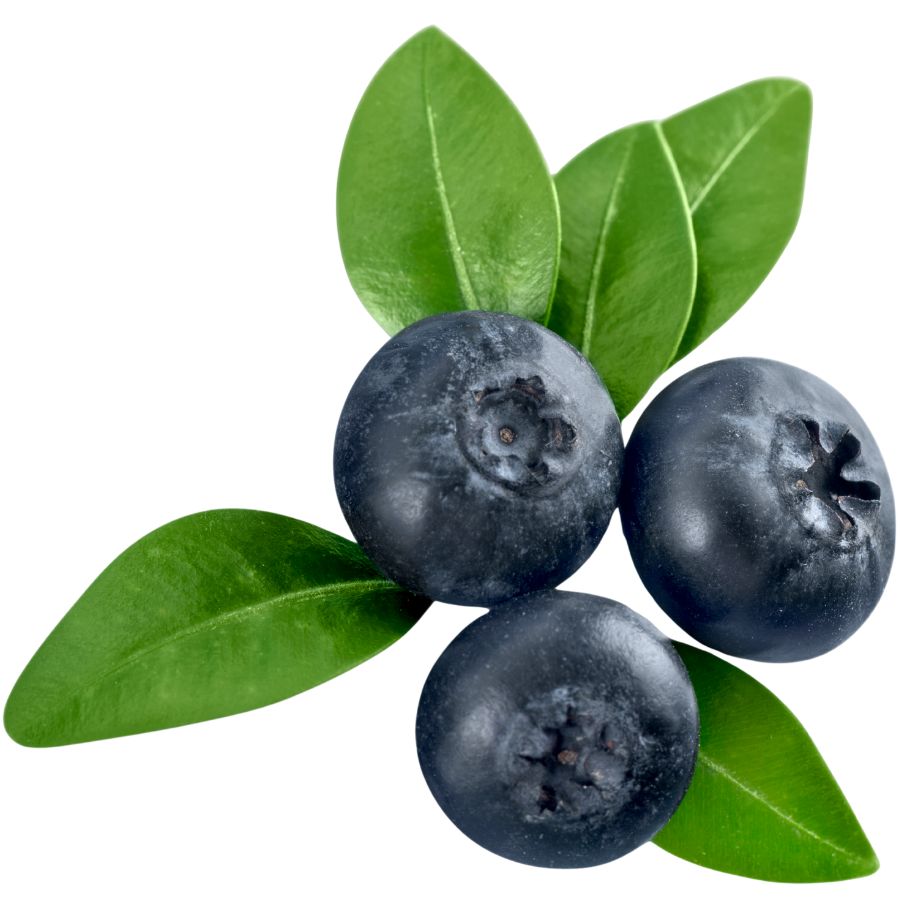
Blueberry, sometimes called highbush or lowbush blueberry depending on the type, grows as a shrub with smooth-edged, oval leaves and clusters of small white or pinkish bell-shaped flowers. The berries start green and ripen to a deep blue with a dusty-looking skin that easily rubs off.
A few lookalikes can confuse foragers, like the berries of Virginia creeper or pokeweed, but the differences are clear when you know what to check. True blueberries grow on woody shrubs and have a five-pointed crown on the bottom of each berry, while dangerous lookalikes often grow on vines or have no crown at all.
Blueberries have a sweet, sometimes tangy flavor and a juicy texture that makes them great for fresh eating. You can also bake them into pies, simmer them into jams, or dry them for snacks.
Only the ripe berries are eaten, while the leaves and stems are usually left alone.
Interestingly, blueberries is that they contain natural pigments that can turn recipes and even your fingers a deep purple when handled.
Spicebush (Lindera benzoin)
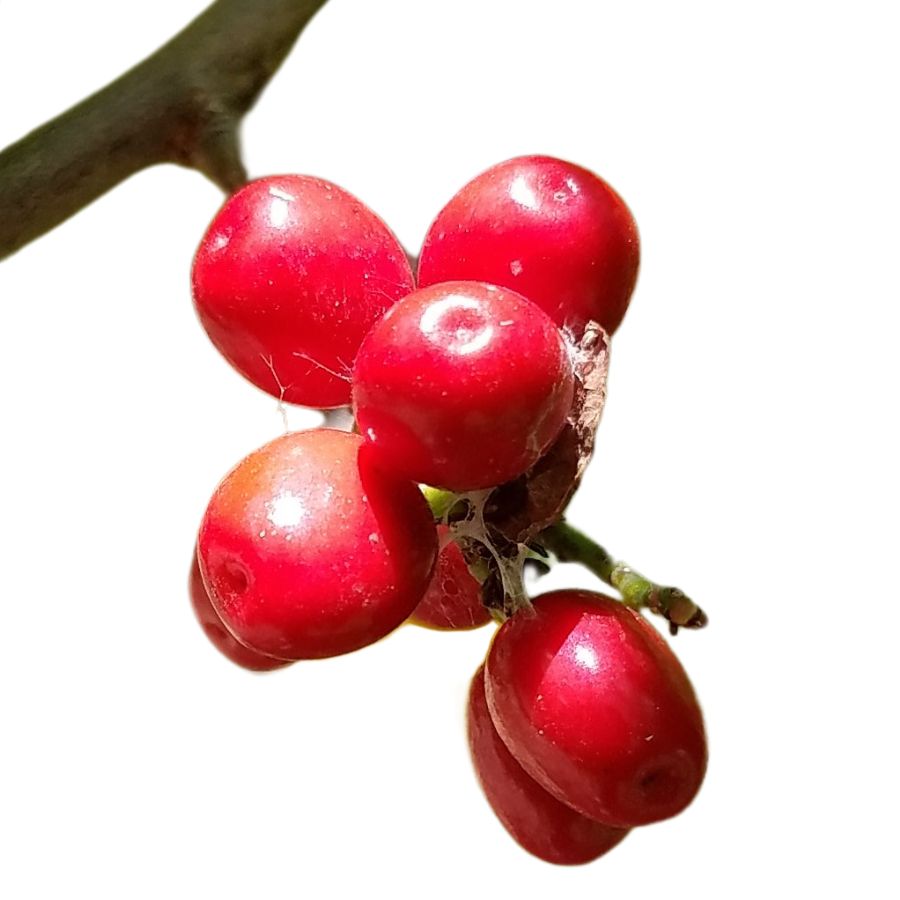
Spicebush has smooth-edged leaves that release a spicy citrus scent when crushed, and it produces clusters of red berries that grow close to the stem. Those berries, along with the young twigs and leaves, are all edible and flavorful.
The berries are especially valued for their warm, peppery kick and are often dried and ground as a seasoning. You can steep the leaves and twigs into tea or simmer them into broths.
Avoid confusing it with lookalikes like Carolina allspice, which has larger, thicker leaves and lacks the same aromatic quality. Its berries also differ in size and internal seed structure.
Spicebush has a long history of use in traditional cooking for its mild numbing effect and warming flavor. Only the berries, leaves, and tender twigs should be consumed—avoid the bark and roots.
Watercress (Nasturtium officinale)
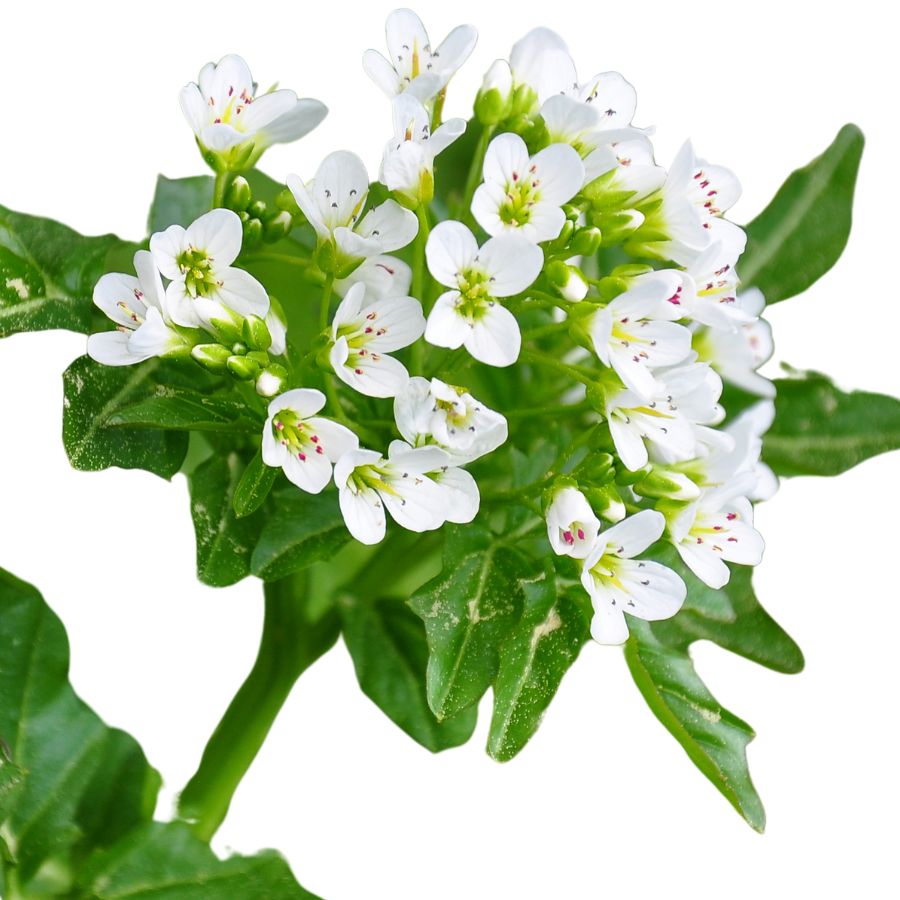
Watercress, also known as yellowcress or garden cress, is an aquatic plant with small, rounded green leaves and hollow stems that often float along the water’s surface. It usually grows in dense mats, and the bright green color is one of the easiest ways to spot it in clear, shallow streams and ponds.
Besides being a popular edible green, watercress has been traditionally used in herbal remedies, especially for boosting digestion and respiratory health.
The leaves and stems are edible, offering a crisp texture and a peppery, slightly spicy taste that can remind you of arugula. People often enjoy it raw in salads, blended into soups, or lightly wilted into stir-fries for a fresh bite.
Stick to eating the leaves and stems, and avoid any parts that look yellowed or slimy, since healthy watercress should always look vibrant and clean.
Watercress has a few lookalikes like lesser celandine or young wild mustard, but true watercress has a distinct sharp flavor and tends to grow only in moving, clean water. Always double-check your identification, because gathering from stagnant or contaminated water sources can expose you to harmful bacteria or parasites.
Garlic Mustard (Alliaria petiolata)
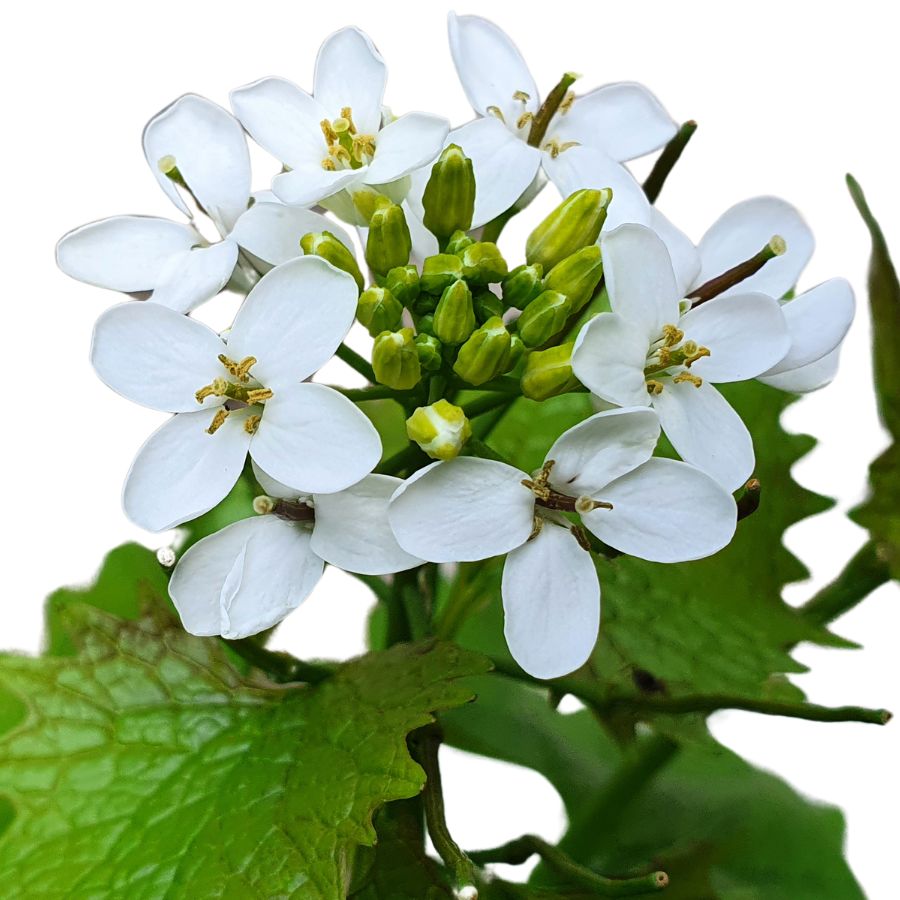
Garlic mustard, sometimes called poor man’s mustard or hedge garlic, has heart-shaped leaves with scalloped edges and small white four-petaled flowers. When you crush the leaves between your fingers, they release a strong garlic-like smell that makes it stand out from similar-looking plants.
The flavor of garlic mustard is sharp and garlicky at first bite, with a peppery bitterness that lingers. Its young leaves are often blended into pestos, stirred into soups, or tossed into salads to add a punch of flavor.
You can also use the roots, which have a taste similar to horseradish when fresh. The seed pods are sometimes collected and used as a spicy seasoning after being dried and crushed.
If you decide to gather some, make sure not to confuse it with plants like ground ivy or purple deadnettle, which do not have that garlic aroma. Stick to harvesting the leaves, flowers, seeds, and roots, and avoid anything with a fuzzy texture or a very different smell.
Daylily (Hemerocallis fulva)
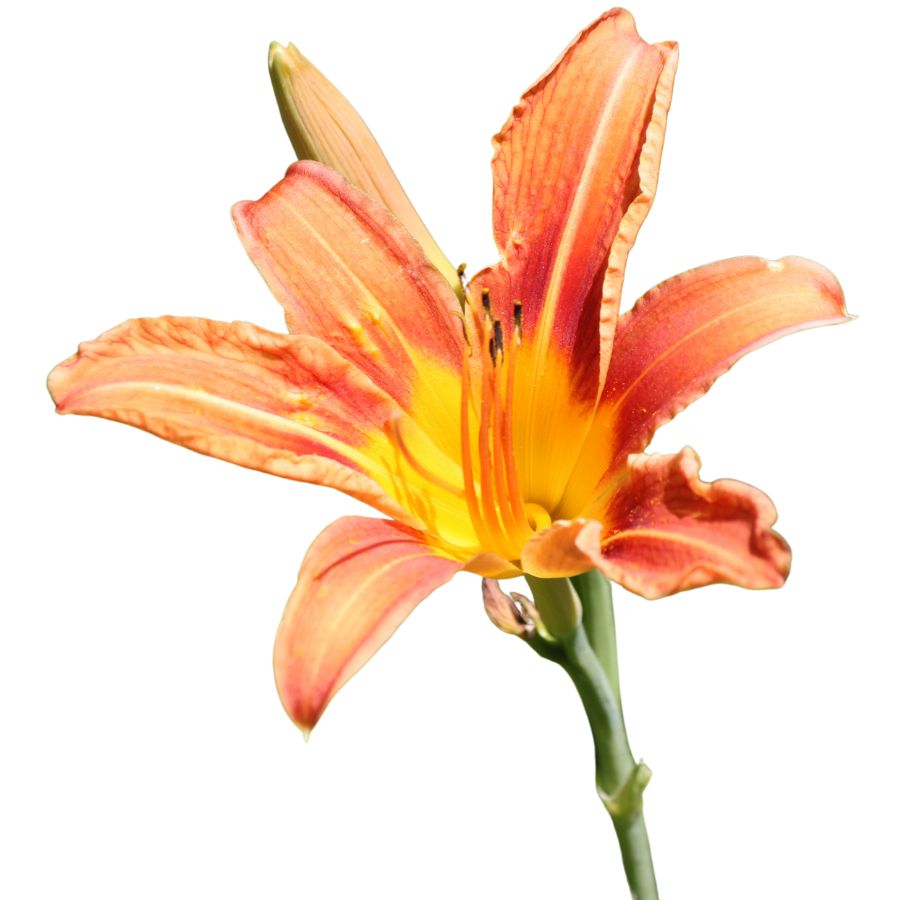
Bright orange flowers known as daylily, tiger lily, or ditch lily can sometimes be mistaken for other plants that are not safe to eat. True daylilies have long, blade-like leaves that grow in clumps at the base and a hollow flower stem, while their toxic lookalikes often have solid stems or different leaf patterns.
When it comes to flavor, daylily buds have a crisp texture and a mild taste that some people compare to green beans or asparagus. The flowers are tender and slightly sweet, which makes them popular for tossing into salads or lightly stir-frying.
Most people use the unopened flower buds in cooking, but the young shoots and tuber-like roots are also gathered for food. Always make sure you are harvesting from clean areas, because roadside plants can carry pollutants that are not safe to eat.
A few important cautions come with daylilies, since some people experience digestive upset after eating large amounts. Start by tasting a small quantity first to see how your body reacts before eating more.
Sassafras (Sassafras albidum)
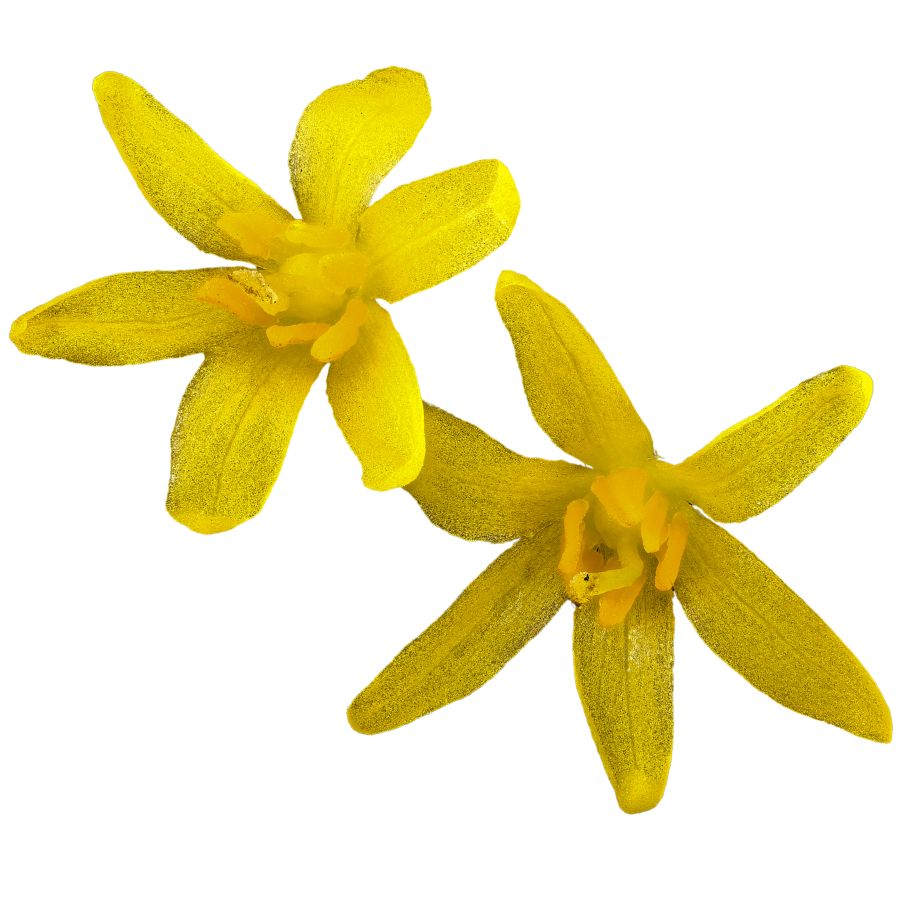
Sassafras is a small deciduous tree with bright green leaves that feel slightly mucilaginous when crushed. You can eat the young leaves raw or dried, and they develop a unique flavor—lightly citrusy, with a smooth texture when chewed.
People use the ground leaves as a thickener in soups and stews, especially in southern recipes. The bark and roots have a stronger taste and were historically brewed into teas with a deep, spicy profile.
There’s a caution with sassafras root: it contains safrole, which has been restricted from commercial food use due to safety studies. However, using a small amount occasionally in traditional preparations is still common in home kitchens.
The tree has a sweet, clove-like scent that sets it apart when the leaves or twigs are snapped. Its closest lookalikes lack that scent and don’t have the same combination of leaf shapes on a single branch.
Pine (Pinus spp.)
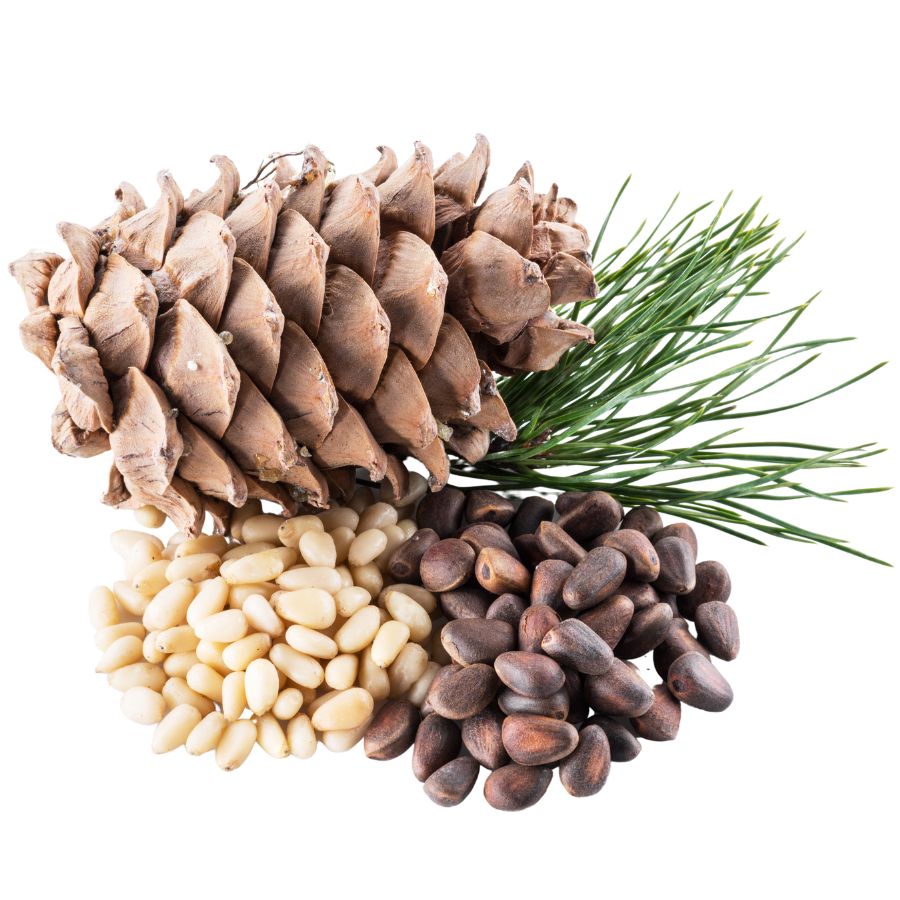
Pine trees offer several edible parts, including the fresh needles, which are used to make tea with a piney, slightly sour flavor. Their bundles of long, slender needles make them easy to separate from toxic lookalikes like yew, which has flat, single needles.
The seeds—pine nuts—are tucked away between the scales of mature cones and are highly nutritious. They’re often toasted to bring out their rich, oily flavor and are commonly added to trail mixes and pasta dishes.
You can scrape the soft white layer of inner bark and dry it into flour, though it’s mostly a fallback food. This layer is chewy when raw and works best when baked or roasted.
Not all pines are safe to eat, and some species contain compounds that can upset your stomach. When in doubt, Eastern White Pine is one of the most widely accepted edible types.
Red Clover (Trifolium pratense)
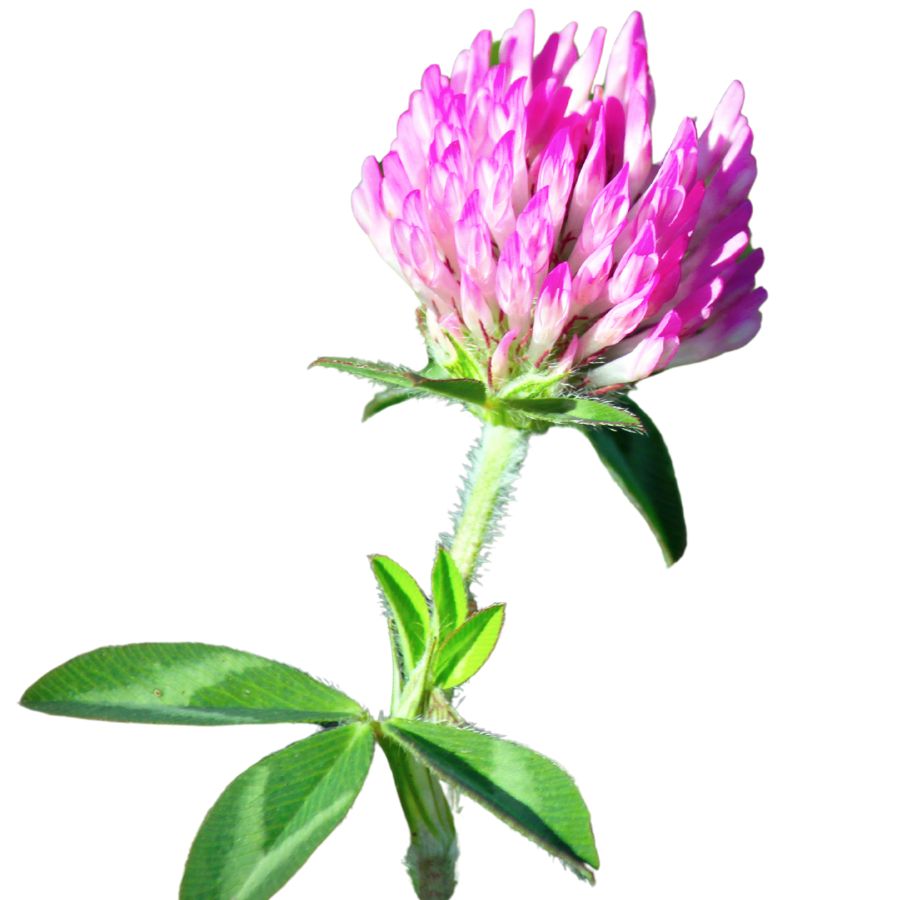
Red clover is also called wild clover or purple clover, and it grows in open areas with lots of sunlight. The round flower heads are a soft pinkish red, and the leaves have a pale crescent near the center.
The flower heads are the part most often gathered, and they can be eaten raw or dried for later use. Some people steep them in hot water for a mild, slightly sweet tea with a grassy flavor.
If you’re collecting flowers, make sure not to confuse them with crown vetch, which grows in similar spots but has more elongated, pea-like flowers. Crown vetch isn’t safe to eat, and it usually has a vine-like growth pattern that red clover doesn’t.
Red clover flowers can be tossed into salads or baked into muffins and breads for color and a hint of sweetness. The leaves are sometimes eaten too, but they tend to be tougher and more bitter.
Purslane (Portulaca oleracea)
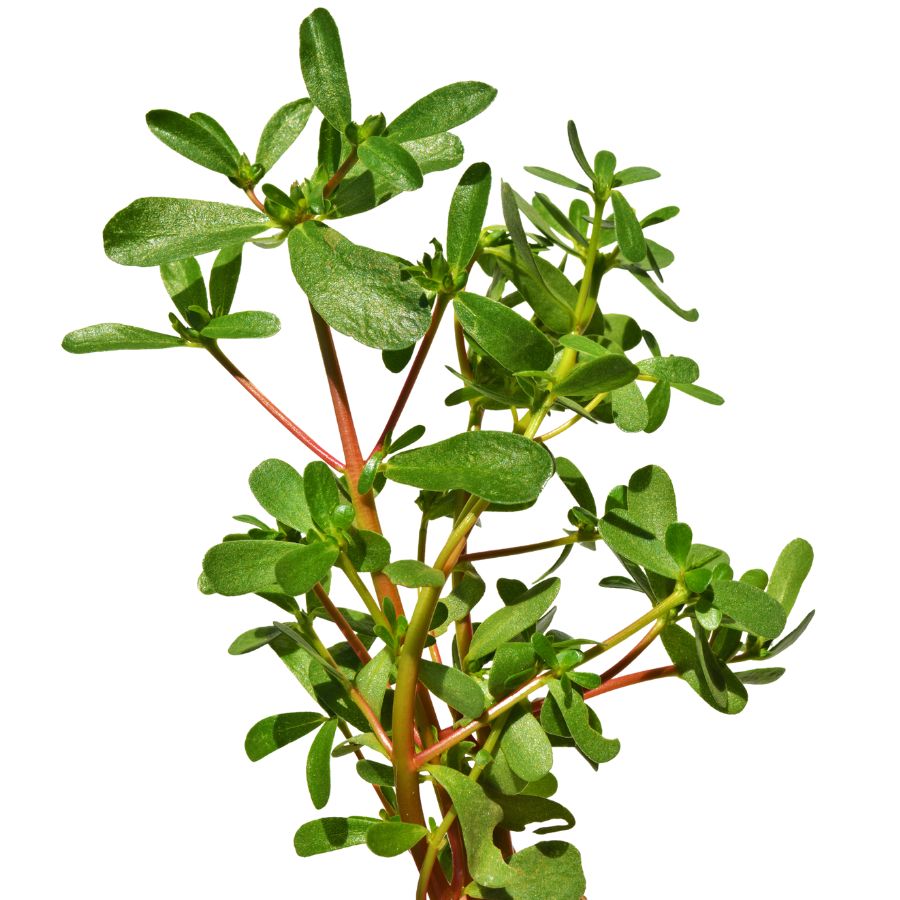
Purslane is a hardy, low-growing plant that’s also sometimes known as little hogweed or verdolaga. It has smooth, reddish stems and thick, paddle-shaped leaves that feel a bit waxy when you touch them.
The stems, leaves, and tiny yellow flowers are all edible, while the roots are not typically eaten. Purslane has a crisp texture with a slightly tart, lemony flavor that works well raw or cooked.
Some plants that look similar include spurge, which has a milky sap and is not edible, so it is important to check for purslane’s smooth, succulent stems and lack of sap. Always double-check by gently snapping a stem to make sure no white liquid appears.
You can toss fresh purslane into salads, sauté it lightly like spinach, or pickle it for later use. Its mild tartness and slight crunch make it a refreshing addition to sandwiches, soups, and even stir-fries.
Wild Carrot (Daucus carota)
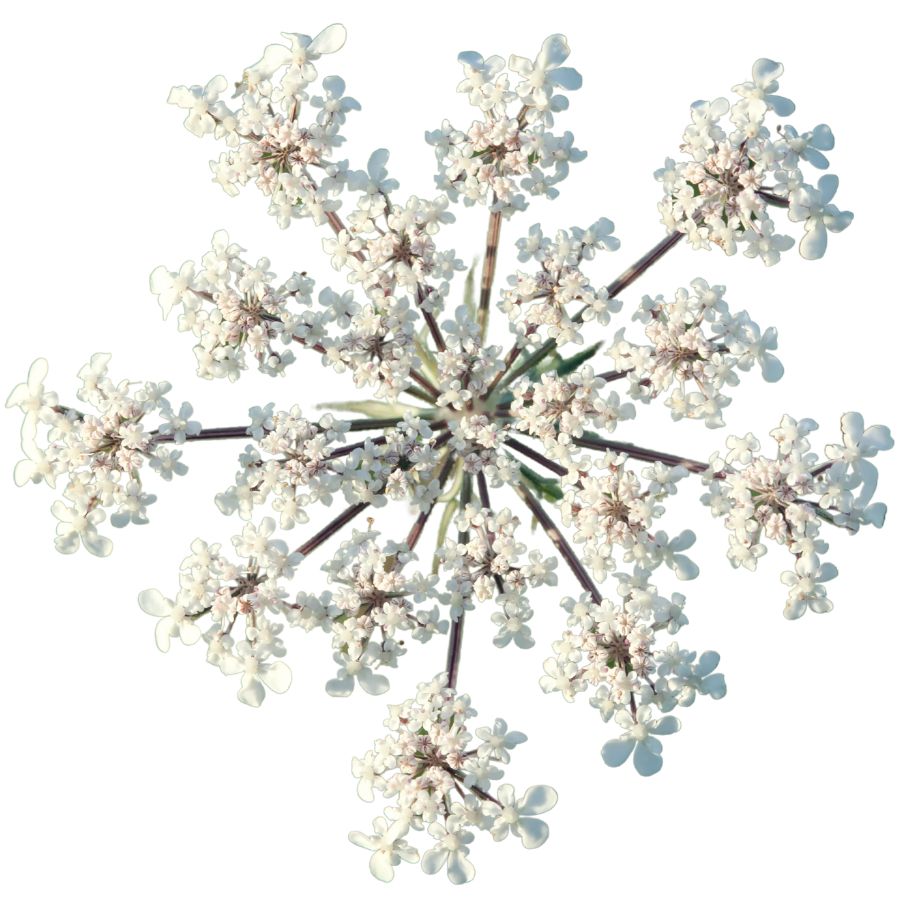
Wild carrot, which you might know as Queen Anne’s lace, grows a slender, white taproot that’s tough and fibrous when mature. When it’s young, the root has a faint carrot scent and a slightly earthy taste that comes through best when boiled or slow-roasted.
The most dangerous thing about wild carrot is how closely it resembles poison hemlock, which has smooth, hairless stems with purple blotches. Wild carrot has fine hairs along its stems and a single dark floret in the center of its flat white flower clusters.
If you’re going to try it, stick to the root and avoid the leaves and stems, which can cause skin irritation in some people. The root is usually peeled, chopped, and cooked like a tougher version of a garden carrot, but don’t expect it to be sweet.
One interesting trait is how the flower head curls into a tight, nest-like shape as it matures. This plant’s close relatives include common garden carrots, but wild ones grow thinner, drier, and with a much stronger flavor.
Ground Ivy (Glechoma hederacea)
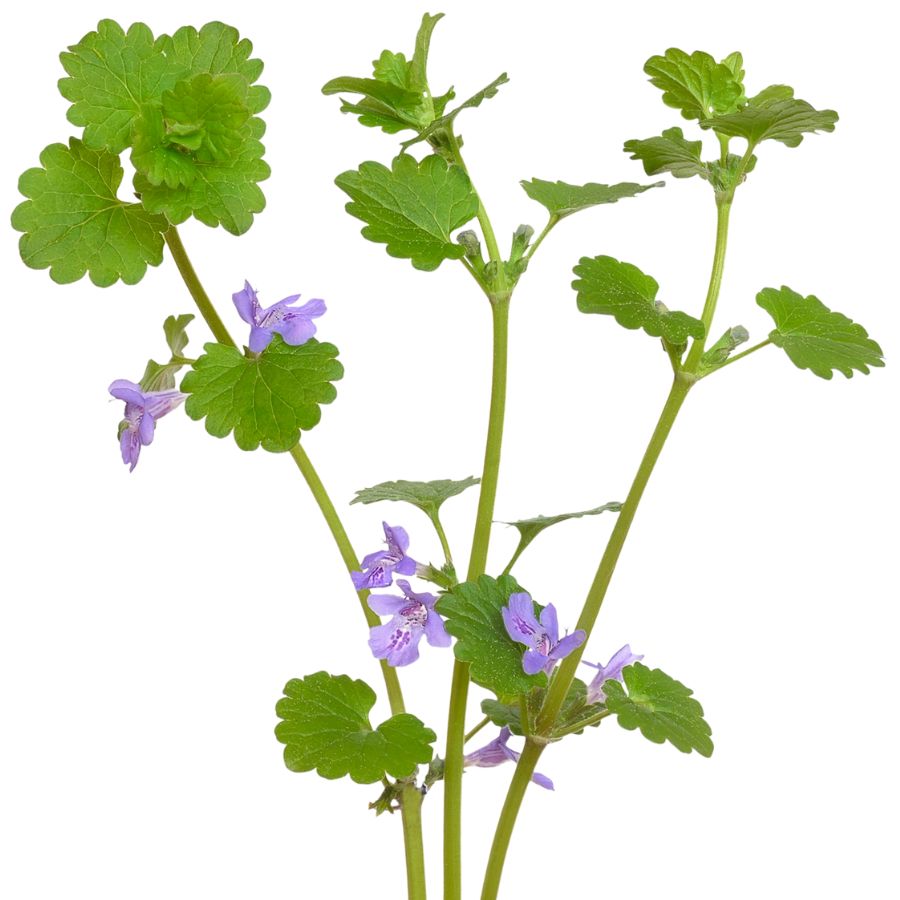
You’re looking at ground ivy if you find a vining plant with scalloped leaves and clusters of tiny bluish-purple flowers hugging the ground. It’s also called creeping charlie or tunhoof, and it grows in dense mats that spread rapidly.
The leaves and stems are edible and have a sharp, minty-bitter flavor that intensifies when dried. Some people use them sparingly in herb butters or infuse them into vinegar for a bold, green tang.
Watch out for lookalikes like henbit, which has more rounded upper leaves and lacks the strong herbal smell. Crushed ground ivy gives off a camphor-like scent that makes it easier to distinguish once you know what to expect.
Avoid foraging near roadsides or polluted soils since this plant easily absorbs heavy metals. Stick to clean patches, and only use the above-ground parts—roots aren’t eaten and older leaves can become too tough.
Toxic Plants That Look Like Edible Plants
There are plenty of wild edibles to choose from, but some toxic native plants closely resemble them. Mistaking the wrong one can lead to severe illness or even death, so it’s important to know exactly what you’re picking.
Poison Hemlock (Conium maculatum)
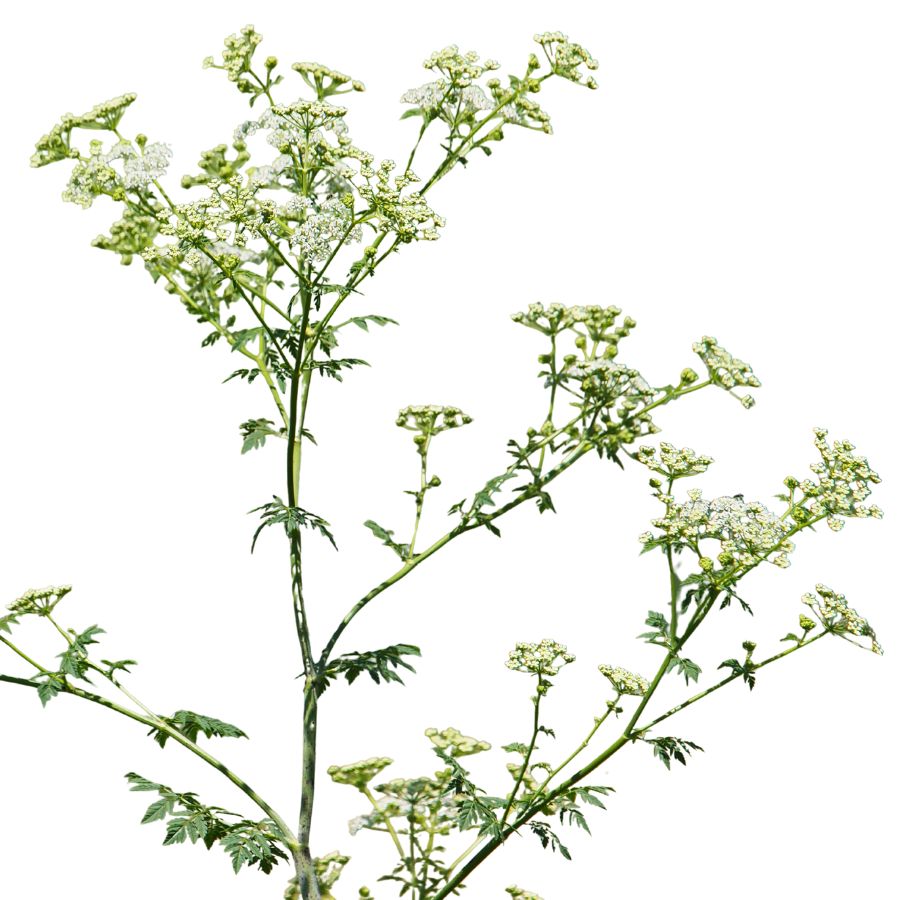
Often mistaken for: Wild carrot (Daucus carota)
Poison hemlock is a tall plant with lacy leaves and umbrella-like clusters of tiny white flowers. It has smooth, hollow stems with purple blotches and grows in sunny places like roadsides, meadows, and stream banks.
Unlike wild carrot, which has hairy stems and a dark central floret, poison hemlock has a musty odor and no flower center spot. It’s extremely toxic; just a small amount can be fatal, and even touching the sap can irritate the skin.
Water Hemlock (Cicuta spp.)
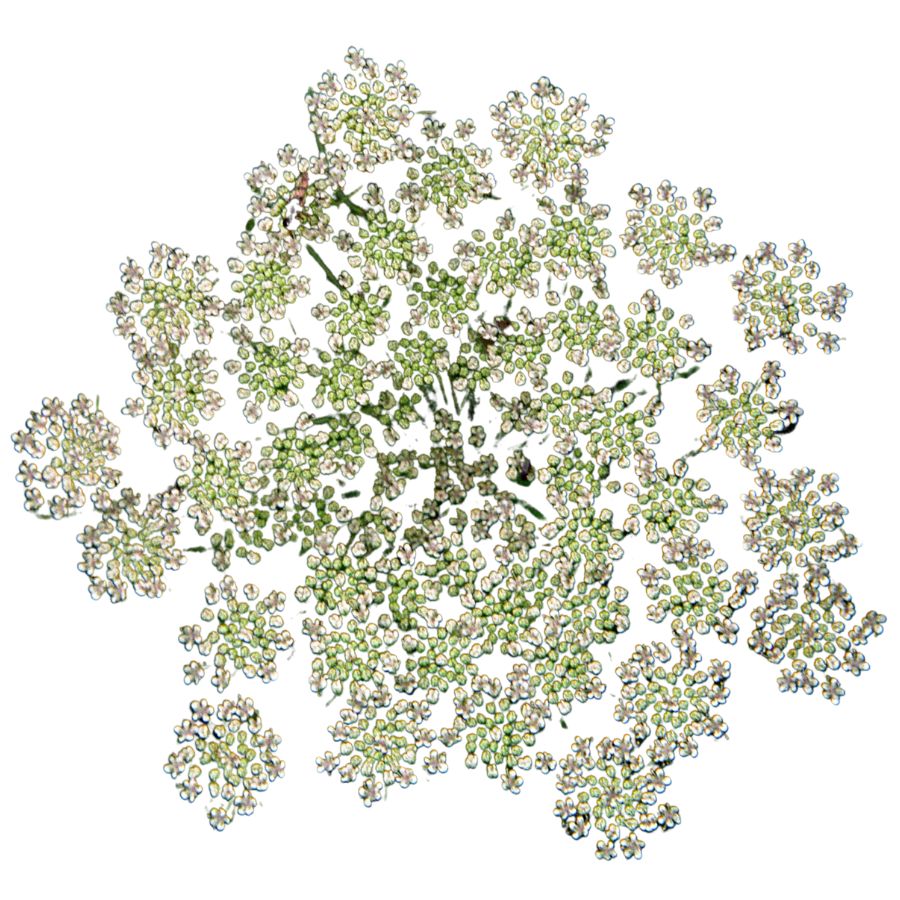
Often mistaken for: Wild parsnip (Pastinaca sativa) or wild celery (Apium spp.)
Water hemlock is a tall, branching plant with umbrella-shaped clusters of small white flowers. It grows in wet places like stream banks, marshes, and ditches, with stems that often show purple streaks or spots.
It can be confused with wild parsnip or wild celery, but its thick, hollow roots have internal chambers and release a yellow, foul-smelling sap when cut. Water hemlock is the most toxic plant in North America, and just a small amount can cause seizures, respiratory failure, and death.
False Hellebore (Veratrum viride)
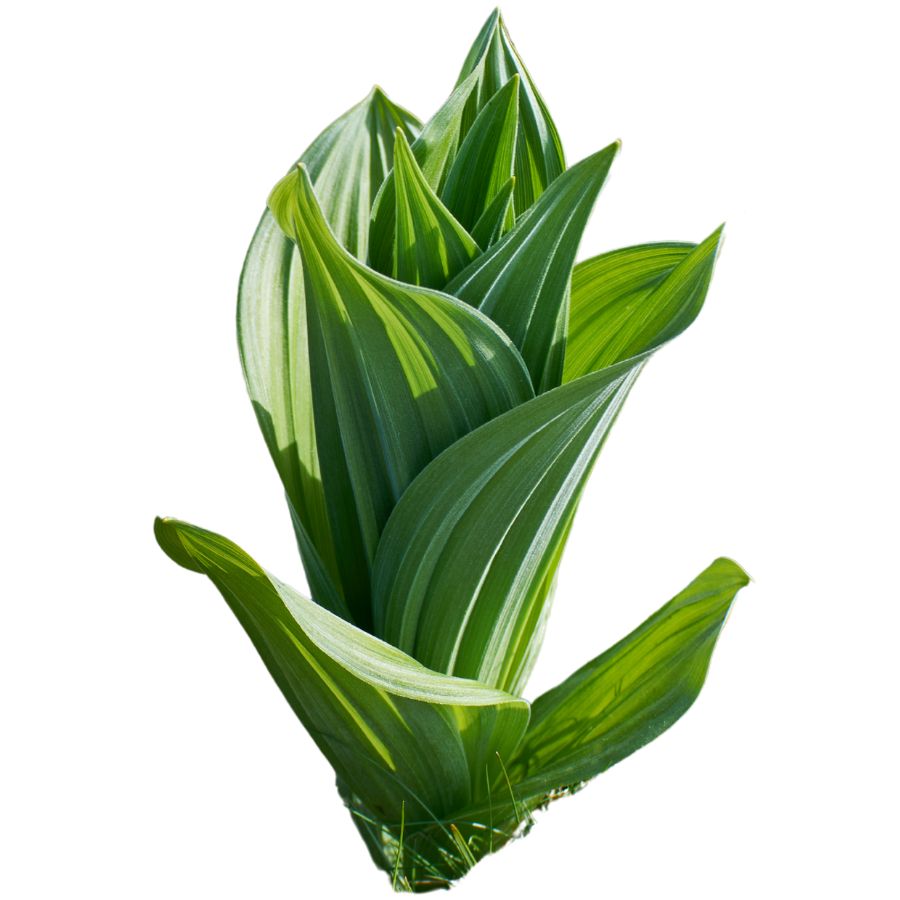
Often mistaken for: Ramps (Allium tricoccum)
False hellebore is a tall plant with broad, pleated green leaves that grow in a spiral from the base, often appearing early in spring. It grows in moist woods, meadows, and along streams.
It’s commonly mistaken for ramps, but ramps have a strong onion or garlic smell, while false hellebore is odorless and later grows a tall flower stalk. The plant is highly toxic, and eating any part can cause nausea, a slowed heart rate, and even death due to its alkaloids that affect the nervous and cardiovascular systems.
Death Camas (Zigadenus spp.)
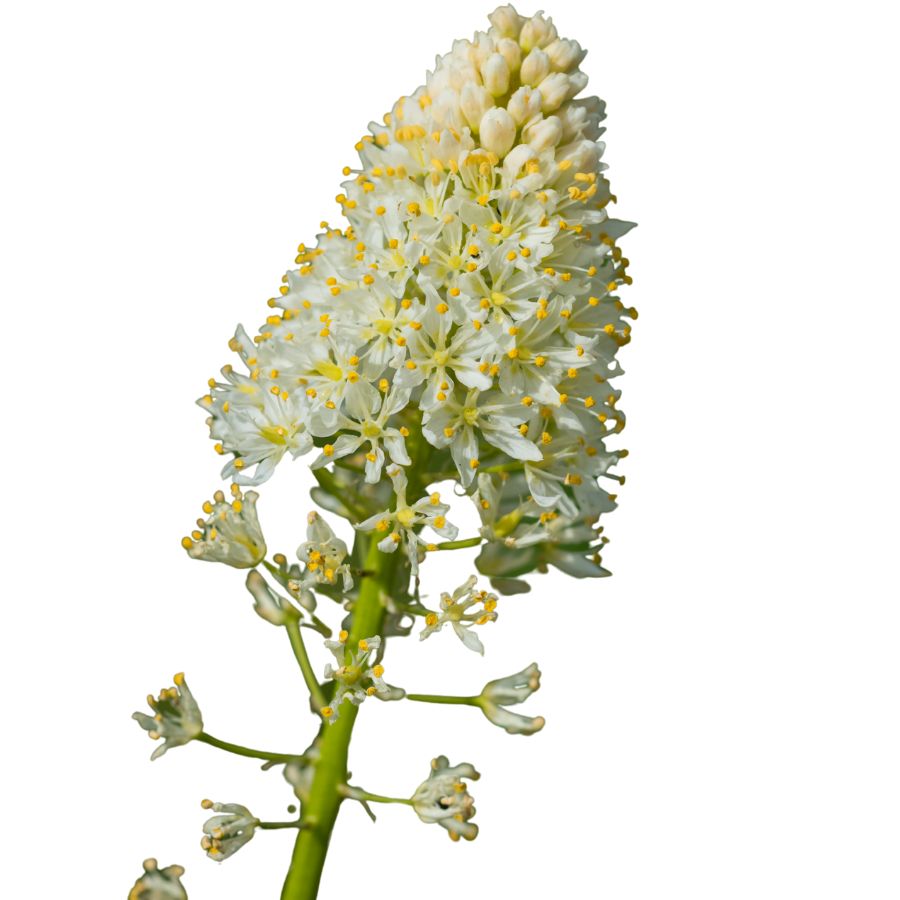
Often mistaken for: Wild onion or wild garlic (Allium spp.)
Death camas is a slender, grass-like plant that grows from underground bulbs and is found in open woods, meadows, and grassy hillsides. It has small, cream-colored flowers in loose clusters atop a tall stalk.
It’s often confused with wild onion or wild garlic due to their similar narrow leaves and habitats, but only Allium plants have a strong onion or garlic scent, while death camas has none. The plant is extremely poisonous, especially the bulbs, and even a small amount can cause nausea, vomiting, a slowed heartbeat, and potentially fatal respiratory failure.
Buckthorn Berries (Rhamnus spp.)
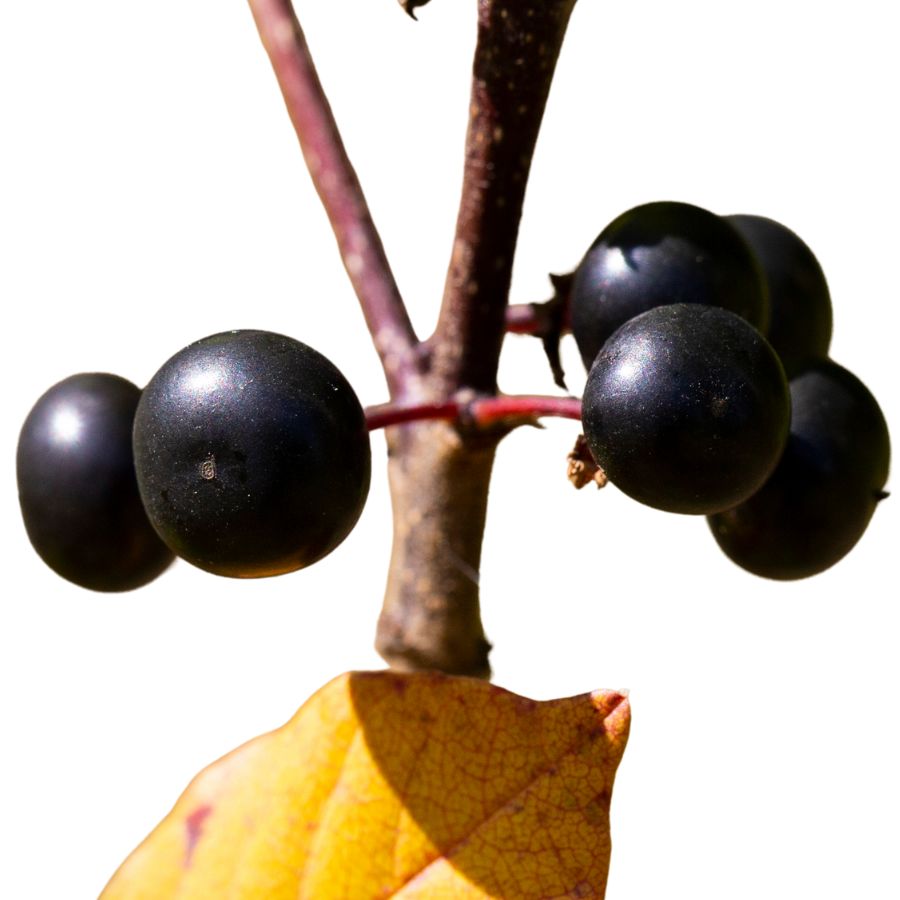
Often mistaken for: Elderberries (Sambucus spp.)
Buckthorn is a shrub or small tree often found along woodland edges, roadsides, and disturbed areas. It produces small, round berries that ripen to dark purple or black and usually grow in loose clusters.
These berries are sometimes mistaken for elderberries and other wild fruits, which also grow in dark clusters, but elderberries form flat-topped clusters on reddish stems while buckthorn berries are more scattered. Buckthorn berries are unsafe to eat as they contain compounds that can cause cramping, vomiting, and diarrhea, and large amounts may lead to dehydration and serious digestive problems.
Mayapple (Podophyllum peltatum)
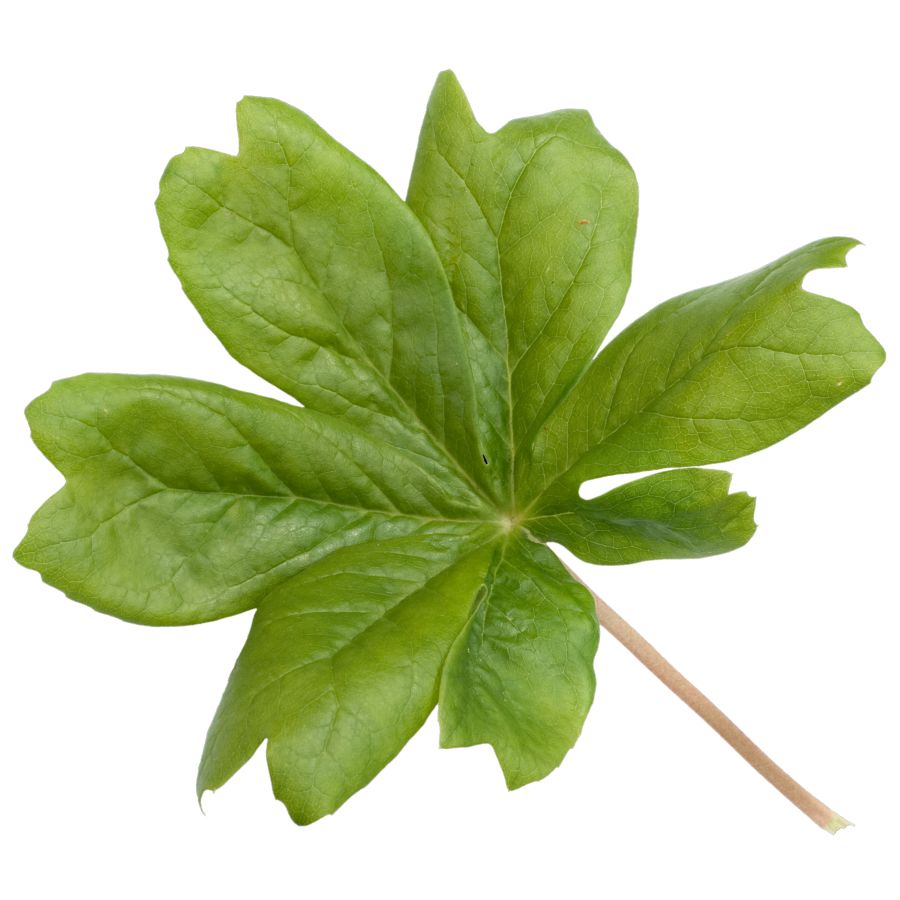
Often mistaken for: Wild grapes (Vitis spp.)
Mayapple is a low-growing plant found in shady forests and woodland clearings. It has large, umbrella-like leaves and produces a single pale fruit hidden beneath the foliage.
The unripe fruit resembles a small green grape, causing confusion with wild grapes, which grow in woody clusters on vines. All parts of the mayapple are toxic except the fully ripe, yellow fruit, which is only safe in small amounts. Eating unripe fruit or other parts can lead to nausea, vomiting, and severe dehydration.
Virginia Creeper (Parthenocissus quinquefolia)
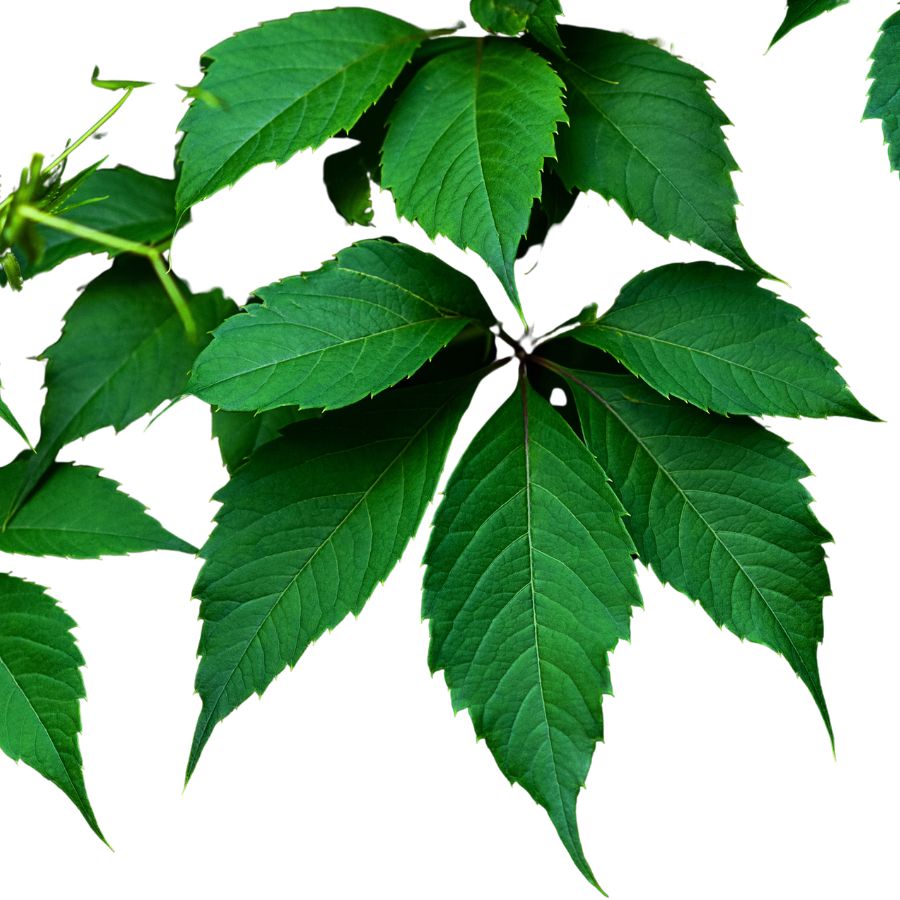
Often mistaken for: Wild grapes (Vitis spp.)
Virginia creeper is a fast-growing vine found on fences, trees, and forest edges. It has five leaflets per stem and produces small, bluish-purple berries from late summer to fall.
It’s often confused with wild grapes since both are climbing vines with similar berries, but grapevines have large, lobed single leaves and tighter fruit clusters. Virginia creeper’s berries are toxic to humans and contain oxalate crystals that can cause nausea, vomiting, and throat irritation.
Castor Bean (Ricinus communis)
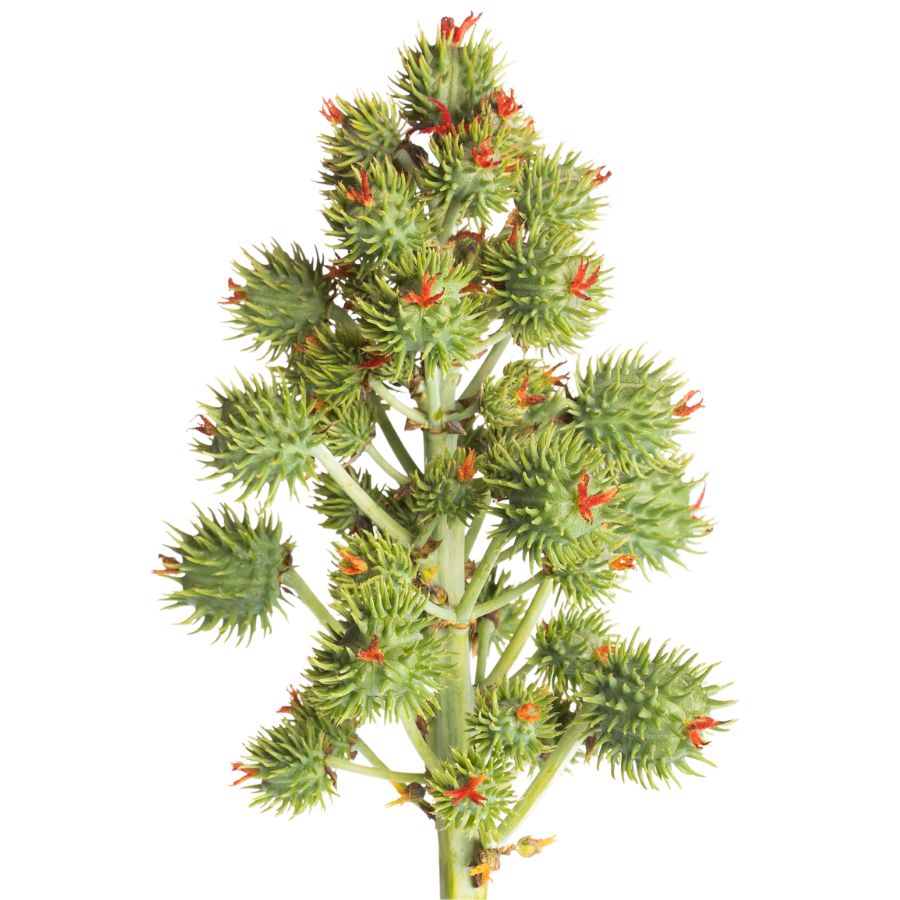
Often mistaken for: Wild rhubarb (Rumex spp. or Rheum spp.)
Castor bean is a bold plant with large, lobed leaves and tall red or green stalks, often found in gardens, along roadsides, and in disturbed areas in warmer regions in the US. Its red-tinged stems and overall size can resemble wild rhubarb to the untrained eye.
Unlike rhubarb, castor bean plants produce spiny seed pods containing glossy, mottled seeds that are extremely toxic. These seeds contain ricin, a deadly compound even in small amounts. While all parts of the plant are toxic, the seeds are especially dangerous and should never be handled or ingested.
A Quick Reminder
Before we get into the specifics about where and how to find these mushrooms, we want to be clear that before ingesting any wild mushroom, it should be identified with 100% certainty as edible by someone qualified and experienced in mushroom identification, such as a professional mycologist or an expert forager. Misidentification of mushrooms can lead to serious illness or death.
All mushrooms have the potential to cause severe adverse reactions in certain individuals, even death. If you are consuming mushrooms, it is crucial to cook them thoroughly and properly and only eat a small portion to test for personal tolerance. Some people may have allergies or sensitivities to specific mushrooms, even if they are considered safe for others.
The information provided in this article is for general informational and educational purposes only. Foraging for wild mushrooms involves inherent risks.
How to Get the Best Results Foraging
Safety should always come first when it comes to foraging. Whether you’re in a rural forest or a suburban greenbelt, knowing how to harvest wild foods properly is a key part of staying safe and respectful in the field.
Always Confirm Plant ID Before You Harvest Anything
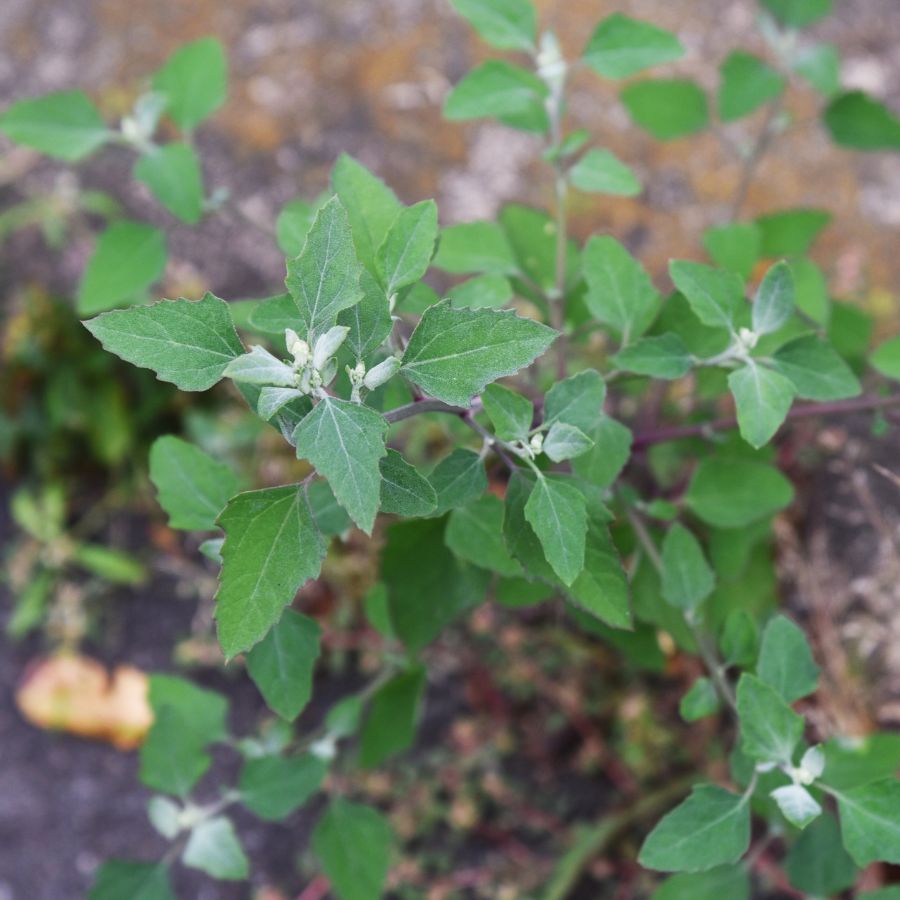
Knowing exactly what you’re picking is the most important part of safe foraging. Some edible plants have nearly identical toxic lookalikes, and a wrong guess can make you seriously sick.
Use more than one reliable source to confirm your ID, like field guides, apps, and trusted websites. Pay close attention to small details. Things like leaf shape, stem texture, and how the flowers or fruits are arranged all matter.
Not All Edible Plants Are Safe to Eat Whole
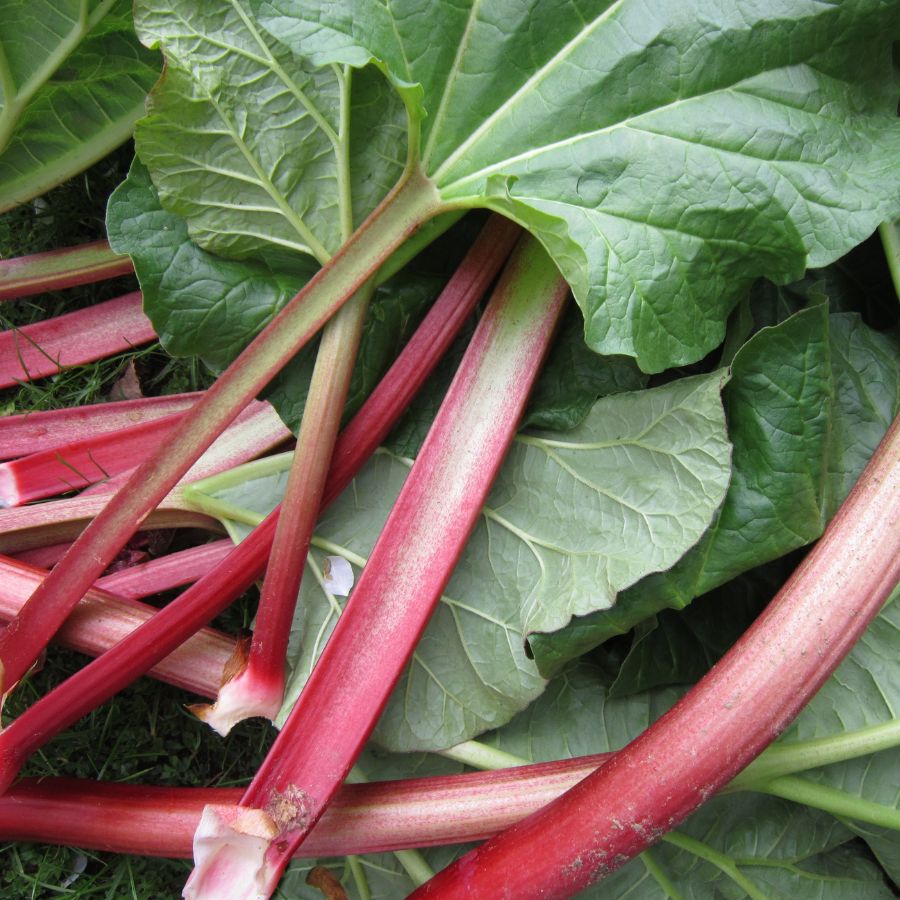
Just because a plant is edible doesn’t mean every part of it is safe. Some plants have leaves, stems, or seeds that can be toxic if eaten raw or prepared the wrong way.
For example, pokeweed is only safe when young and properly cooked, while elderberries need to be heated before eating. Rhubarb stems are fine, but the leaves are poisonous. Always look up which parts are edible and how they should be handled.
Avoid Foraging in Polluted or Contaminated Areas
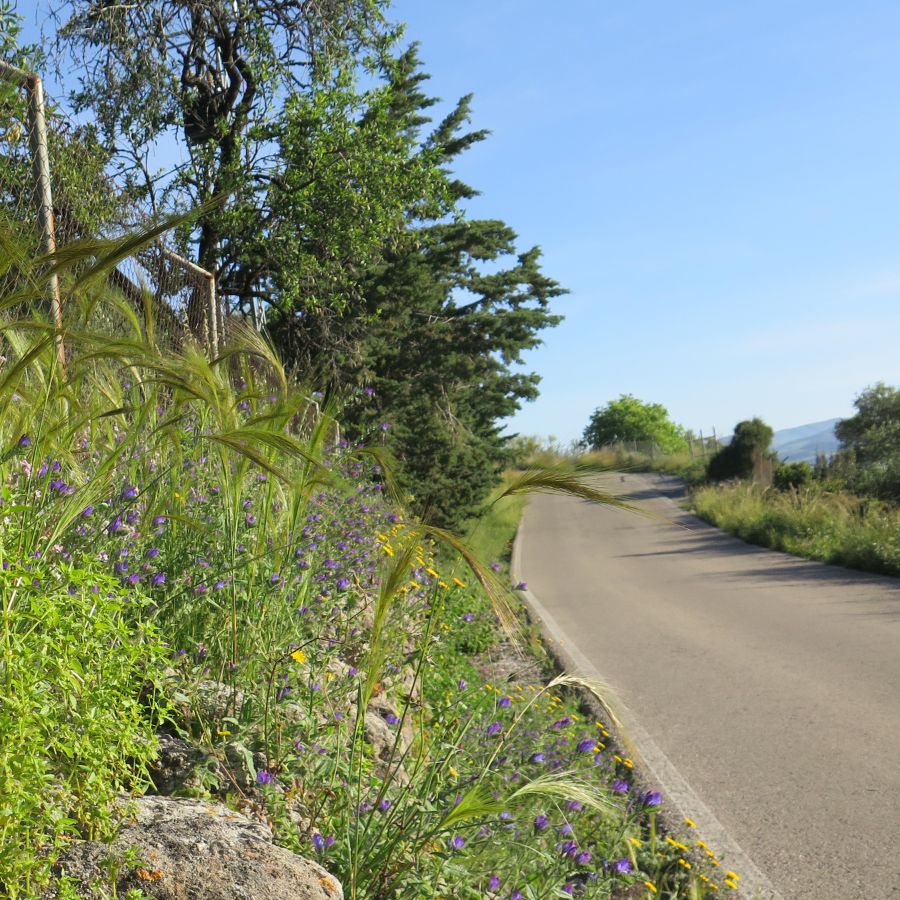
Where you forage matters just as much as what you pick. Plants growing near roads, buildings, or farmland might be coated in chemicals or growing in polluted soil.
Even safe plants can take in harmful substances from the air, water, or ground. Stick to clean, natural areas like forests, local parks that allow foraging, or your own yard when possible.
Don’t Harvest More Than What You Need
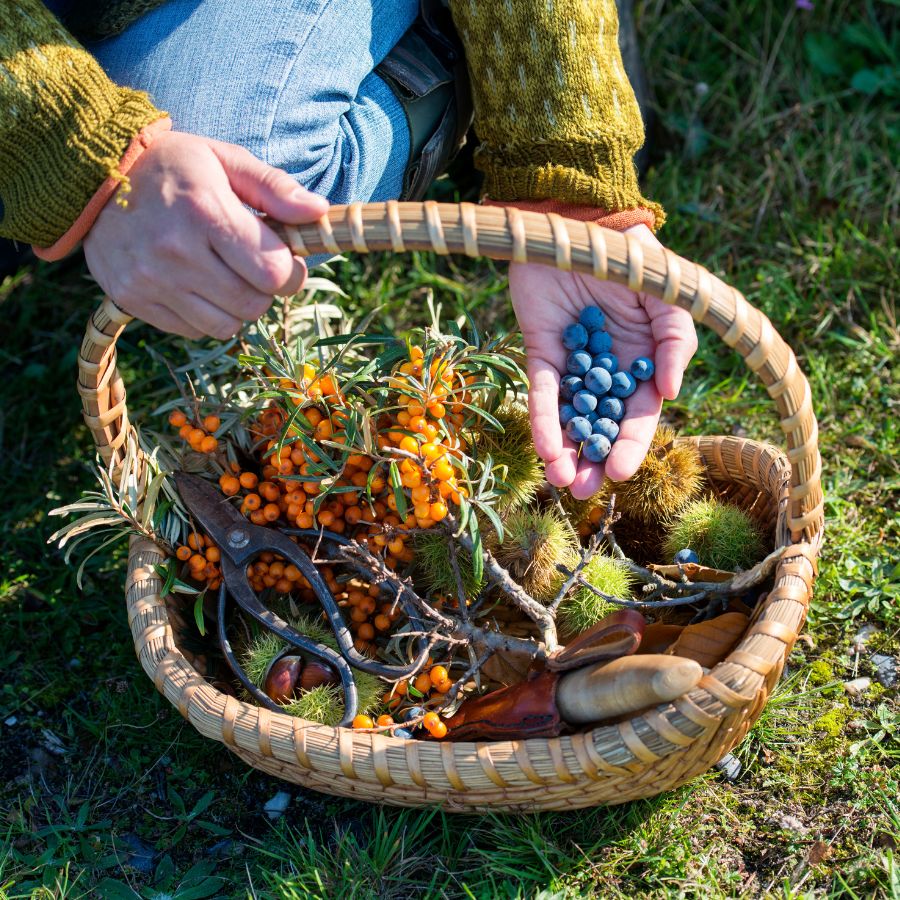
When you forage, take only what you plan to use. Overharvesting can hurt local plant populations and reduce future growth in that area.
Leaving plenty behind helps plants reproduce and supports wildlife that depends on them. It also ensures other foragers have a chance to enjoy the same resources.
Protect Yourself and Your Finds with Proper Foraging Gear

Having the right tools makes foraging easier and safer. Gloves protect your hands from irritants like stinging nettle, and a good knife or scissors lets you harvest cleanly without damaging the plant.
Use a basket or breathable bag to carry what you collect. Plastic bags hold too much moisture and can cause your greens to spoil before you get home.
This forager’s toolkit covers the essentials for any level of experience.
Watch for Allergic Reactions When Trying New Wild Foods

Even if a wild plant is safe to eat, your body might react to it in unexpected ways. It’s best to try a small amount first and wait to see how you feel.
Be extra careful with kids or anyone who has allergies. A plant that’s harmless for one person could cause a reaction in someone else.
Check Local Rules Before Foraging on Any Land
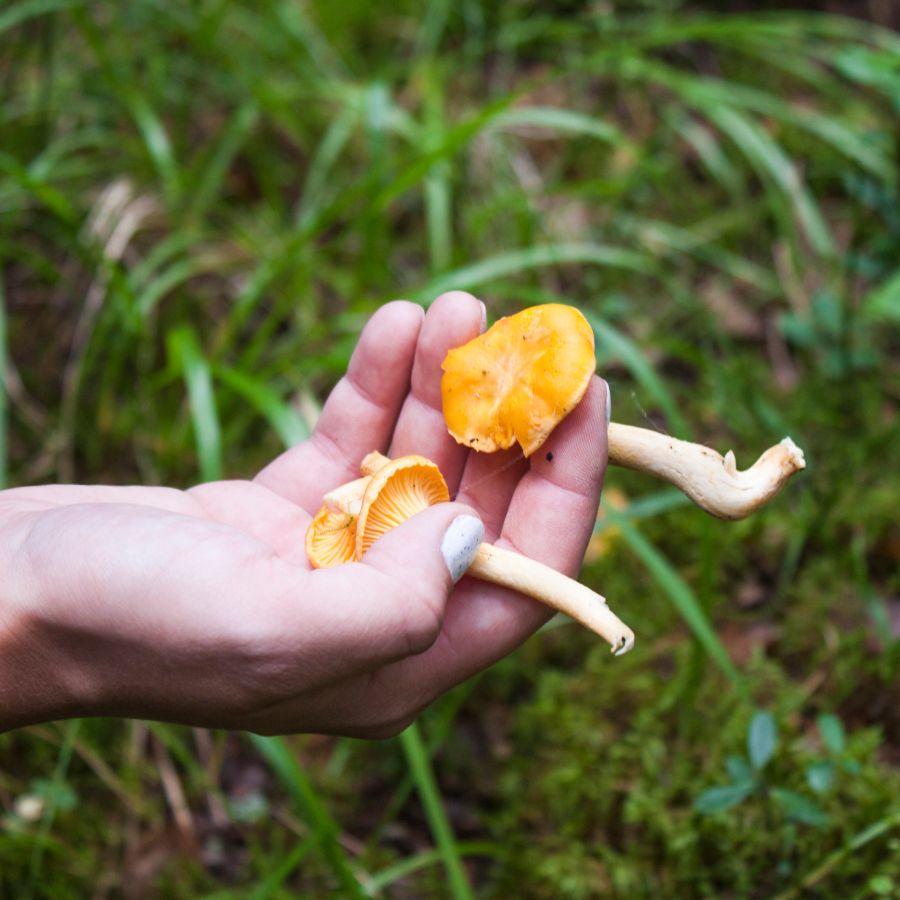
Before you start foraging, make sure you know the rules for the area you’re in. What’s allowed in one spot might be completely off-limits just a few miles away.
Some public lands permit limited foraging, while others, like national parks, usually don’t allow it at all. If you’re on private property, always get permission first.
Before you head out
Before embarking on any foraging activities, it is essential to understand and follow local laws and guidelines. Always confirm that you have permission to access any land and obtain permission from landowners if you are foraging on private property. Trespassing or foraging without permission is illegal and disrespectful.
For public lands, familiarize yourself with the foraging regulations, as some areas may restrict or prohibit the collection of mushrooms or other wild foods. These regulations and laws are frequently changing so always verify them before heading out to hunt. What we have listed below may be out of date and inaccurate as a result.
Where to Find Forageables in the State
There is a range of foraging spots where edible plants grow naturally and often in abundance:
| Plant | Locations |
| Wild Leek / Ramp (Allium tricoccum) | – Northern hardwood forests in Sussex County – Private woodlands in the Delaware Water Gap region – Shaded slopes in the Watchung Mountains |
| Wood Sorrel (Oxalis stricta) | – Urban green spaces in Newark – Meadows in the Meadowlands region – Gardens and lawns throughout Bergen County |
| Stinging Nettle (Urtica dioica) | – Riparian zones along the Raritan River – Edges of fields in Hunterdon County – Damp woodlands in the Sourland Mountains |
| Dandelion (Taraxacum officinale) | – Lawns and parks in Jersey City – Roadside areas in Monmouth County – Open fields in the Pine Barrens |
| Lamb’s Quarters (Chenopodium album) | – Abandoned lots in Camden – Agricultural fields in Salem County – Community gardens in Trenton |
| Sheep Sorrel (Rumex acetosella) | – Sandy soils in the Pine Barrens – Grasslands in Cape May County – Open fields in the Highlands region |
| Milkweed (Asclepias syriaca) | – Meadows in Thompson Park, Lincroft – Fields in the Great Swamp National Wildlife Refuge – Edges of forests in Mercer County |
| Chicory (Cichorium intybus) | – Roadsides in Somerset County – Open fields in Burlington County – Along trails in the Delaware and Raritan Canal State Park |
| Plantain (Plantago major) | – Lawns in suburban areas of Middlesex County – Park grounds in Hoboken – Trailsides in the Watchung Reservation |
| Narrowleaf Plantain (Plantago lanceolata) | – Grassy areas in Union County – Meadows in the Hackensack River area – Along sidewalks in Paterson |
| Cattail (Typha latifolia) | – Wetlands in the Hamilton Marshes of the Delaware River – Marshes in Cape May County – Edges of ponds in the Pine Barrens |
| Curly Dock (Rumex crispus) | – Fields in Hunterdon County – Along streams in Warren County – Damp areas in the Meadowlands |
| Yellow Dock (Rumex obtusifolius) | – Meadows in Sussex County – Edges of wetlands in Ocean County – Fields in the Highlands region |
| Jerusalem Artichoke (Helianthus tuberosus) | – Field edges in Mercer County – Floodplains along the Delaware River – Open areas in the Sourland Mountains |
| Wild Bergamot (Monarda fistulosa) | – Meadows in the New Jersey Pinelands – Naturalized areas in South Jersey – Fields in the Highlands region |
| Serviceberry (Amelanchier spp.) | – Woodlands in the Watchung Mountains – Forest edges in Morris County – Along trails in the Sourland Mountains |
| Black Raspberry (Rubus occidentalis) | – Thickets in the Delaware Water Gap – Forest edges in Warren County – Along fences in Hunterdon County |
| Blackberry (Rubus allegheniensis) | – Fields in the Pine Barrens – Edges of forests in Sussex County – Along trails in the Watchung Reservation |
| Wild Strawberry (Fragaria virginiana) | – Meadows in Monmouth County – Open woods in the Highlands region – Lawns in suburban areas of Bergen County |
| Blueberry (Vaccinium spp.) | – Pine Barrens in Atlantic County – Wetlands in Cape May County – Forests in the Highlands region |
| Elderberry (Sambucus nigra subsp. canadensis) | – Wetlands in the Meadowlands – Edges of streams in Somerset County – Woodlands in the Sourland Mountains |
| Mayapple (Podophyllum peltatum) | – Deciduous forests in the Watchung Mountains – Shaded areas in Mercer County – Woodlands in the Highlands region |
| Spicebush (Lindera benzoin) | – Understory of forests in the Pine Barrens – Shaded areas in the Sourland Mountains – Woodlands in Morris County |
| Groundnut (Apios americana) | – Along riverbanks in the Delaware Water Gap – Wetlands in Cumberland County – Edges of streams in the Pine Barrens |
| Wild Grape (Vitis spp.) | – Thickets in the Meadowlands – Forest edges in Sussex County – Along fences in Hunterdon County |
| Wild Rose (Rosa spp.) | – Meadows in Cape May County – Edges of forests in the Highlands region – Along trails in the Pine Barrens |
| Hickory (Carya spp.) | – Deciduous forests in the Watchung Mountains – Woodlands in Somerset County – Forests in the Sourland Mountains |
| Black Walnut (Juglans nigra) | – Woodlands in Mercer County – Along streams in Hunterdon County – Forests in the Highlands region |
| Watercress (Nasturtium officinale) | – Springs in the Sourland Mountains – Streams in Sussex County – Wetlands in the Pine Barrens |
| Wintercress (Barbarea vulgaris) | – Fields in Monmouth County – Roadsides in Bergen County – Meadows in the Highlands region |
| Wild Garlic (Allium vineale) | – Lawns in suburban areas of Middlesex County – Fields in Salem County – Along trails in the Watchung Reservation |
| Wild Mustard (Sinapis arvensis) | – Fields in Burlington County – Roadsides in Camden County – Meadows in the Pine Barrens |
| Garlic Mustard (Alliaria petiolata) | – Woodlands in the Watchung Mountains – Shaded areas in Mercer County – Forests in the Highlands region |
| Wild Lettuce (Lactuca virosa) | – Fields in Hunterdon County – Roadsides in Warren County – Meadows in the Meadowlands |
| Wild Violet (Viola sororia) | – Lawns in suburban areas of Bergen County – Shaded areas in the Sourland Mountains – Woodlands in the Highlands region |
| Daylily (Hemerocallis fulva) | – Roadsides in Monmouth County – Gardens in Camden County – Meadows in the Pine Barrens |
| Mulberry (Morus spp.) | – Urban areas in Newark – Parks in Jersey City – Woodlands in Mercer County |
| Sassafras (Sassafras albidum) | – Forests in the Pine Barrens – Woodlands in the Sourland Mountains – Deciduous forests in Sussex County |
| Wild Cherry (Prunus serotina) | – Woodlands in the Watchung Mountains – Forest edges in Hunterdon County – Along trails in the Highlands region |
| Staghorn Sumac (Rhus typhina) | – Fields in Cape May County – Roadsides in Bergen County – Meadows in the Pine Barrens |
| Pine (Pinus spp.) | – Pine Barrens in Atlantic County – Forests in the Highlands region – Woodlands in Ocean County |
| Clover (Trifolium pratense, Trifolium repens) | – Lawns in suburban areas of Middlesex County – Fields in Salem County – Meadows in the Pine Barrens |
| Amaranth (Amaranthus retroflexus) | – Fields in Burlington County – Roadsides in Camden County – Gardens in Trenton |
| Purslane (Portulaca oleracea) | – Sidewalk cracks in urban areas of Newark – Gardens in Jersey City – Fields in Monmouth County |
| Wild Carrot (Daucus carota) | – Fields in Hunterdon County – Roadsides in Warren County – Meadows in the Meadowlands |
| Basswood (Tilia americana) | – Deciduous forests in the Watchung Mountains – Woodlands in Somerset County – Forests in the Sourland Mountains |
| Wild Peppermint (Mentha arvensis) | – Wetlands in the Meadowlands – Along streams in Sussex County – Damp areas in the Pine Barrens |
| Ground Ivy (Glechoma hederacea) | – Lawns in suburban areas of Bergen County – Gardens in Camden County – Shaded areas in the Sourland Mountains |
Peak Foraging Seasons
Different edible plants grow at different times of year, depending on the season and weather. Timing your search makes all the difference.
Spring
Spring brings a fresh wave of wild edible plants as the ground thaws and new growth begins:
| Plant | Months | Best Weather Conditions |
| Wild Leek / Ramp (Allium tricoccum) | March–May | Cool, moist soil after thaw |
| Wood Sorrel (Oxalis stricta) | April–June | Mild temps, damp mornings |
| Stinging Nettle (Urtica dioica) | April–May | Cloudy or after rain, wear gloves |
| Dandelion (Taraxacum officinale) | March–May | Sunny or partly cloudy days |
| Curly Dock (Rumex crispus) | April–June | After rain, mild temps |
| Yellow Dock (Rumex obtusifolius) | April–June | Damp, soft soil |
| Sheep Sorrel (Rumex acetosella) | April–June | Light rain or overcast skies |
| Garlic Mustard (Alliaria petiolata) | April–May | Cloudy, early morning for best flavor |
| Wild Violet (Viola sororia) | March–May | Cool, moist areas, shaded |
| Mayapple (Podophyllum peltatum) | April–May | Damp forest floor, filtered sun |
| Ground Ivy (Glechoma hederacea) | April–June | After light rain, shaded paths |
| Wild Bergamot (Monarda fistulosa) | May | Sunny, open fields post-rain |
| Serviceberry (Amelanchier spp.) | May | Mild, sunny weather |
| Wintercress (Barbarea vulgaris) | March–May | Cloudy days, rich moist soil |
| Sassafras (Sassafras albidum) | March–May | After spring rain, warm afternoon |
| Watercress (Nasturtium officinale) | March–May | Clear, flowing water in cool weather |
| Wild Garlic (Allium vineale) | March–May | Wet soil, overcast skies |
| Clover (Trifolium pratense, Trifolium repens) | April–June | Light dew or morning moisture |
| Wild Mustard (Sinapis arvensis) | April–May | Full sun after a rain |
| Wild Lettuce (Lactuca virosa) | May | Damp mornings, not too hot |
Summer
Summer is a peak season for foraging, with fruits, flowers, and greens growing in full force:
| Plant | Months | Best Weather Conditions |
| Lamb’s Quarters (Chenopodium album) | June–August | Warm weather after rain |
| Milkweed (Asclepias syriaca) | June–August | Hot, sunny fields |
| Chicory (Cichorium intybus) | June–August | Dry, open areas |
| Plantain (Plantago major) | June–August | After rain or early morning |
| Narrowleaf Plantain (Plantago lanceolata) | June–August | Damp lawns or meadows |
| Cattail (Typha latifolia) | June–August | Edges of ponds or wetlands |
| Daylily (Hemerocallis fulva) | June–July | Morning sun, dewy foliage |
| Mulberry (Morus spp.) | June–July | Warm, calm weather |
| Wild Strawberry (Fragaria virginiana) | June | Cool morning, dry air |
| Black Raspberry (Rubus occidentalis) | June–July | Dry, sunny days for ripe fruit |
| Blackberry (Rubus allegheniensis) | July–August | Warm, low humidity preferred |
| Blueberry (Vaccinium spp.) | July–August | Dry, sunny slopes |
| Elderberry (Sambucus nigra subsp. canadensis) | July–August | Clear weather, dry plants |
| Amaranth (Amaranthus retroflexus) | July–September | Hot sun, after dry spells |
| Purslane (Portulaca oleracea) | July–September | Hot, compacted soil |
| Wild Carrot (Daucus carota) | July–August | Dry, open ground |
| Wild Peppermint (Mentha arvensis) | July–August | Moist ground, shade or dappled sun |
| Groundnut (Apios americana) | August | Moist soil along streams |
Fall
As temperatures drop, many edible plants shift underground or produce their last harvests:
| Plant | Months | Best Weather Conditions |
| Jerusalem Artichoke (Helianthus tuberosus) | September–November | Cool, post-frost mornings |
| Hickory (Carya spp.) | September–October | Dry days, fallen nuts easy to spot |
| Black Walnut (Juglans nigra) | September–October | Crisp, dry weather for clean gathering |
| Wild Grape (Vitis spp.) | September–October | Warm days, cool nights |
| Spicebush (Lindera benzoin) | September | Mild, dry forest edges |
| Staghorn Sumac (Rhus typhina) | September | Dry, sunny weather for tart cones |
| Basswood (Tilia americana) | September | Dry weather after leaf fall |
| Wild Cherry (Prunus serotina) | September | Mild weather, check before rain |
| Sassafras (Sassafras albidum) | September–October | After first frost, roots dig easier |
Winter
Winter foraging is limited but still possible, with hardy plants and preserved growth holding on through the cold:
| Plant | Months | Best Weather Conditions |
| Pine (Pinus spp.) | December–February | Clear cold days, dry needles or resin |
| Cattail (Typha latifolia) | December–February | Frozen marshes make access easier |
| Wild Garlic (Allium vineale) | December–February | Mild days, unfrozen soil |
| Plantain (Plantago major) | December (mild winters) | Thawed patches, warm spells |
| Dandelion (Taraxacum officinale) | December (mild winters) | Sunny days, exposed soil |
| Watercress (Nasturtium officinale) | December–February | Flowing, unfrozen streams |
One Final Disclaimer
The information provided in this article is for general informational and educational purposes only. Foraging for wild plants and mushrooms involves inherent risks. Some wild plants and mushrooms are toxic and can be easily mistaken for edible varieties.
Before ingesting anything, it should be identified with 100% certainty as edible by someone qualified and experienced in mushroom and plant identification, such as a professional mycologist or an expert forager. Misidentification can lead to serious illness or death.
All mushrooms and plants have the potential to cause severe adverse reactions in certain individuals, even death. If you are consuming foraged items, it is crucial to cook them thoroughly and properly and only eat a small portion to test for personal tolerance. Some people may have allergies or sensitivities to specific mushrooms and plants, even if they are considered safe for others.
Foraged items should always be fully cooked with proper instructions to ensure they are safe to eat. Many wild mushrooms and plants contain toxins and compounds that can be harmful if ingested.

